Shows

Data Science at HomeRobots Suck (But It’s Not Their Fault) (Ep. 288)
We were promised robot butlers and got Roombas that cry under the couch. In this brutally honest (and slightly hilarious) episode, Francesco dives into why the robot revolution fizzled, why your dishwasher still needs you, and how robotics became more YouTube circus than household helper. Spoiler: It's not the tech – it's us.
Sponsors
DSH is proudly sponsored by Amethix Technologies. At the intersection of ethics and engineering, Amethix creates AI systems that don’t just function—they adapt, learn, and serve. With a focus on dual-use innovation, Amethix is shaping a future where intelli...
2025-08-0516 min
Data Science at HomeBrains in the Machine: The Rise of Neuromorphic Computing (Ep. 285)
In this episode of Data Science at Home, we explore the fascinating world of neuromorphic computing — a brain-inspired approach to computation that could reshape the future of AI and robotics. The episode breaks down how neuromorphic systems differ from conventional AI architectures like transformers and LLMs, diving into spiking neural networks (SNNs), their benefits in energy efficiency and real-time processing, and their limitations in training and scalability. Real-world applications are highlighted, including low-power drones, hearing aids, and event-based cameras. Francesco closes with a vision of hybrid systems where neuromorphic chips and LLMs coexist, blending biological inspiration with modern AI....
2025-06-1824 min
Data Science at HomeAutonomous Weapons and AI Warfare (Ep. 275)Here’s the updated text with links to the websites included:
AI is revolutionizing the military with autonomous drones, surveillance tech, and decision-making systems. But could these innovations spark the next global conflict? In this episode of Data Science at Home, we expose the cutting-edge tech reshaping defense—and the chilling ethical questions that follow. Don’t miss this deep dive into the AI arms race!
🎧 LISTEN / SUBSCRIBE TO THE PODCAST
Apple Podcasts
Podbean Podcasts
Player FM
Chapters
00:00 - Intro
01:54 - Autonomous Vehicles
03:11 - Surveillance And Reconnaissance
04:15 - Predictive Analysis
2024-12-1617 min
Data Science at HomeHumans vs. Bots: Are You Talking to a Machine Right Now? (Ep. 273)In this episode of Data Science at Home, host Francesco Gadaleta dives deep into the evolving world of AI-generated content detection with experts Souradip Chakraborty, Ph.D. grad student at the University of Maryland, and Amrit Singh Bedi, CS faculty at the University of Central Florida.
Together, they explore the growing importance of distinguishing human-written from AI-generated text, discussing real-world examples from social media to news. How reliable are current detection tools like DetectGPT? What are the ethical and technical challenges ahead as AI continues to advance? And is the balance between innovation and regulation tipping in t...
2024-11-2549 min
Data Science at HomeCareers, Skills, and the Evolution of AI (Ep. 248)!!WARNING!!
Due to some technical issues the volume is not always constant during the show. I sincerely apologise for any inconvenience
Francesco
In this episode, I speak with Richie Cotton, Data Evangelist at DataCamp, as he delves into the dynamic intersection of AI and education. Richie, a seasoned expert in data science and the host of the podcast, brings together a wealth of knowledge and experience to explore the evolving landscape of AI careers, the skills essential for generative AI technologies, and the symbiosis of domain expertise and technical skills in...
2024-01-0832 min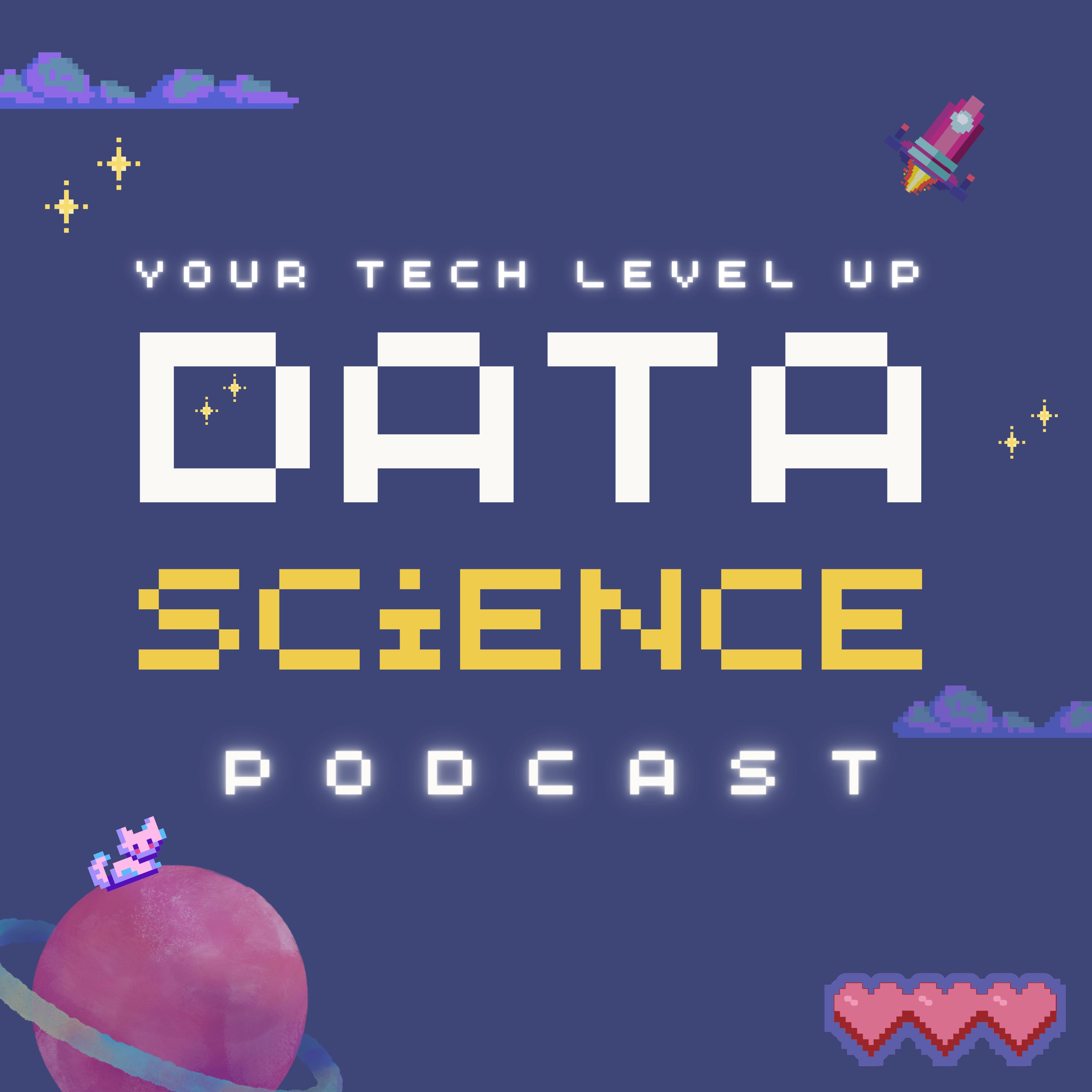
Data Science at HomeCareers, Skills, and the Evolution of AI (Ep. 248)!!WARNING!!Due to some technical issues the volume is not always constant during the show. I sincerely apologise for any inconvenienceFrancesco In this episode, I speak with Richie Cotton, Data Evangelist at DataCamp, as he delves into the dynamic intersection of AI and education. Richie, a seasoned expert in data science and the host of the podcast, brings together a wealth of knowledge and experience to explore the evolving landscape of AI careers, the skills essential for generative AI technologies, and the symbiosis of domain ex...
2024-01-0832 min
Data Science at HomePredicting Out Of Memory Kill events with Machine Learning (Ep. 203)Sometimes applications crash. Some other times applications crash because memory is exhausted. Such issues exist because of bugs in the code, or heavy memory usage for reasons that were not expected during design and implementation.
Can we use machine learning to predict and eventually detect out of memory kills from the operating system?
Apparently, the Netflix app many of us use on a daily basis leverage ML and time series analysis to prevent OOM-kills.
Enjoy the show!
Our Sponsors
Explore the Complex World of Regulations. Compliance can be overwhelming. Multiple frameworks. Overlapping...
2022-09-2019 min
Data Science at HomePredicting Out Of Memory Kill events with Machine Learning (Ep. 203)Sometimes applications crash. Some other times applications crash because memory is exhausted. Such issues exist because of bugs in the code, or heavy memory usage for reasons that were not expected during design and implementation. Can we use machine learning to predict and eventually detect out of memory kills from the operating system?Apparently, the Netflix app many of us use on a daily basis leverage ML and time series analysis to prevent OOM-kills.Enjoy the show!Our SponsorsExplore the Complex World of Regulations. Compliance can be...
2022-09-2019 min
Data Science at HomeSpeaking about data with Mikkel Settnes from Dreamdata.io (Ep. 170)In this episode Mikkel and Francesco have a really interesting conversation about some key differences between large and small organization in approaching machine learning.
Listen to the episode to know more.
References
https://dreamdata.io/b2b-attribution
https://dreamdata.io/services
https://www.nature.com/articles/s43586-020-00001-2
2021-09-2434 min
Data Science at HomeSpeaking about data with Mikkel Settnes from Dreamdata.io (Ep. 170)In this episode Mikkel and Francesco have a really interesting conversation about some key differences between large and small organization in approaching machine learning. Listen to the episode to know more. Referenceshttps://dreamdata.io/b2b-attributionhttps://dreamdata.io/services https://www.nature.com/articles/s43586-020-00001-2 This is a public episode. If you would like to discuss this with other subscribers or get access to bonus episodes, visit datascienceathome.substack.com
2021-09-2434 min
Data Science at HomeHow are organisations doing with data and AI? (Ep. 168)A few weeks ago I was the guest of a very interesting show called "AI Today". In that episode I talked about some of the biggest trends emerging in AI and machine learning today as well as how organizations are dealing with and managing their data. The original show has been published at https://www.cognilytica.com/2021/08/11/ai-today-podcast-interview-with-francesco-gadaleta-host-of-data-science-at-home-podcast/ Our SponsorsQuantum MetricStay off the naughty list this holiday season by reducing customer friction, increasing conversions, and personalizing the shopping experience. Want a...
2021-09-0735 min
Data Science at HomeHow are organisations doing with data and AI? (Ep. 168)A few weeks ago I was the guest of a very interesting show called "AI Today".
In that episode I talked about some of the biggest trends emerging in AI and machine learning today as well as how organizations are dealing with and managing their data.
The original show has been published at https://www.cognilytica.com/2021/08/11/ai-today-podcast-interview-with-francesco-gadaleta-host-of-data-science-at-home-podcast/
Our Sponsors
Quantum Metric
Stay off the naughty list this holiday season by reducing customer friction, increasing conversions, and personalizing the shopping experience. Want a sneak peak? Visit us at qu...
2021-09-0735 min
Data Science at HomeDon't fight! Cooperate. Generative Teaching Networks (Ep. 167)Remember GANs? Generative Adversarial Networks for synthetic data generation?
There is a new method called Generative Teaching Networks, that uses similar concepts - just quite the opposite :P - to train models faster, better and with less data.
Enjoy the show!
Our Sponsors
Quantum Metric
Stay off the naughty list this holiday season by reducing customer friction, increasing conversions, and personalizing the shopping experience. Want a sneak peak? Visit us at quantummetric.com/podoffer and see if you qualify to receive our “12 Days of Insights” offer with code DATASCIENCE. This offer gives you 12...
2021-08-3116 min
Data Science at HomeCSV sucks. Here is why. (Ep. 166)It's time we get serious about replacing the CSV format with something that, guess what? it has been around for so long.
In this episode I explain the good parts of CSV files and the not so good ones. It's time we evolve to something better.
Our Sponsors
Quantum Metric
Stay off the naughty list this holiday season by reducing customer friction, increasing conversions, and personalizing the shopping experience. Want a sneak peak? Visit us at quantummetric.com/podoffer and see if you qualify to receive our “12 Days of Insights” offer with...
2021-08-2420 min
Data Science at HomeReinforcement Learning is all you need. Or is it? (Ep. 165)Is reinforcement learning sufficient to build truly intelligent machines? Listen to this episode to find out.
Our Sponsors
Quantum Metric
Stay off the naughty list this holiday season by reducing customer friction, increasing conversions, and personalizing the shopping experience. Want a sneak peak? Visit us at quantummetric.com/podoffer and see if you qualify to receive our “12 Days of Insights” offer with code DATASCIENCE. This offer gives you 12-day access to our platform coupled with a bespoke insight report that will help you identify where customers are struggling or engaging in your digital product.
2021-08-1730 min
AI Today PodcastAI Today Podcast: Interview with Francesco Gadaleta, host of Data Science at Home podcastOn the AI Today podcast we regularly interview thought leaders who are implementing AI and cognitive technology at various companies and agencies. However in this episode hosts Kathleen Walch and Ron Schmelzer interview Francesco Gadaleta, host of the Data Science at Home podcast. As his podcast talks about about data and data science trends, Francesco shares with us some of the biggest trends emerging in this area today as well as how organizations are dealing with and managing their data.Continue reading AI Today Podcast: Interview with Francesco Gadaleta, host of Data Science at Home podcast at...
2021-08-1134 min
Data Science at HomeWhat's happening with AI today? (Ep. 164)
In this episode I have a wonderful chat with Ronald Schmelzer and Kathleen Walch, authors of "AI Today" the top podcast for those wanting a no-hype, practical, real-world insight into what enterprises, public sector agencies, thought leaders, leading technology companies, pundits, and experts are doing with AI today.
Sponsored by Quantum Metric
Did you know that 2021 holiday ecommerce sales are expected to exceed 2020 benchmarks?
Are you prepared to capture every customer revenue opportunity?
With Quantum Metric, you can be.
Visit their website at quantummetric.com/podoffer and see if you qualify to receive their “12 Days of Insights” offer with code DATASCIENC...
2021-08-1125 min
Data Science at Home2 effective ways to explain your predictions (Ep. 163)Our Sponsor
Amethix use advanced Artificial Intelligence and Machine Learning to build data platforms and predictive engines in domain like finance, healthcare, pharmaceuticals, logistics, energy. Amethix provide solutions to collect and secure data with higher transparency and disintermediation, and build the statistical models that will support your business.
References
Fisher, Aaron, Cynthia Rudin, and Francesca Dominici. “Model Class Reliance: Variable importance measures for any machine learning model class, from the ‘Rashomon’ perspective.” http://arxiv.org/abs/1801.01489 (2018).
Python SHAP
https://github.com/slundberg/shap
2021-08-0324 min
Data Science at HomeThe Netflix challenge. Fair or what? (Ep. 162)Remember the Netflix challenge?
It was a ton of money for the one who would have cracked the problem of recommending the best possible movie.
Was it a fair challenge? Did it work?
Let me tell you what happened...
Sponsors
Get one of the best VPN at a massive discount with coupon code DATASCIENCE. It provides you with an 83% discount which unlocks the best price in the market plus 3 extra months for free. Here is the link https://surfshark.deals/DATASCIENCE
2021-07-2221 min
Data Science at HomeArtificial Intelligence for Blockchains with Jonathan Ward CTO of Fetch AI (Ep. 161)In this episode Fetch AI CTO Jonathan Ward speaks about decentralization, AI, blockchain for smart cities and the enterprise.
Below some great links about collective learning, smart contracts in Rust and the Fetch AI ecosystem.
Decentralised collective learning: https://github.com/fetchai/colearn
Smart contracting platform written in Rust https://docs.cosmwasm.com/docs/0.14/
Fetch.ai cosmwasm contracts for collective learning: https://github.com/fetchai/contract-learn
How the Colearn system works: https://vimeo.com/440365943
2021-07-1532 min
Data Science at HomeApache Arrow, Ballista and Big Data in Rust with Andy Grove RB (Ep. 160)Do you want to know the latest in big data analytics frameworks? Have you ever heard of Apache Arrow? Rust? Ballista? In this episode I speak with Andy Grove one of the main authors of Apache Arrow and Ballista compute engine.
Andy explains some challenges while he was designing the Arrow and Ballista memory models and he describes some amazing solutions.
Our Sponsors
If building software is your passion, you’ll love ThoughtWorks Technology Podcast. It’s a podcast for techies by techies. Their team of experienced technologists take a deep dive into a tech topic that’...
2021-07-0829 min
Data Science at HomeGitHub Copilot: yay or nay? (Ep. 159)It made already quite some noise in the news, GitHub copilot promises to be your pair programmer for life.
In this episode I explain how and what GitHub copilot does. Should developers be happy, scared or just keep coding the traditional way?
Sponsors
Get one of the best VPN at a massive discount with coupon code DATASCIENCE. It provides you with an 83% discount which unlocks the best price in the market plus 3 extra months for free. Here is the link https://surfshark.deals/DATASCIENCE
2021-07-0632 min
Data Science at HomePandas vs Rust [RB] (Ep. 158)Sponsors
Get one of the best VPN at a massive discount with coupon code DATASCIENCE. It provides you with an 83% discount which unlocks the best price in the market plus 3 extra months for free.
Here is the link https://surfshark.deals/DATASCIENCE
2021-07-0131 min
Data Science at HomeA simple trick for very unbalanced data (Ep. 157)Data from the real world are never perfectly balanced. In this episode I explain a simple yet effective trick to train models with very unbalanced data. Enjoy the show!
Sponsors
Get one of the best VPN at a massive discount with coupon code DATASCIENCE. It provides you with an 83% discount which unlocks the best price in the market plus 3 extra months for free. Here is the link https://surfshark.deals/DATASCIENCE
References
Leo Breiman, Random Forests, 2001
C. Chen, A. Liaw, L. Breiman, Using Random Forest to Learn Imbalanced Data (2004)
2021-06-2222 min
Data Science at HomeTime to take your data back with Tapmydata (Ep. 156)In this episode I am with Gilbert Hill, head of strategy at https://tapmydata.com/
We speak about personal data, blockchain and the ability to control it and monetize with another simple yet effective app in the ecosystem.
References
https://tapmydata.com/
https://medium.com/@tholder/we-dont-want-your-data-pushing-boundaries-in-data-collection-and-end-to-end-encryption-for-apps-ebd1d5f79df5
2021-06-1541 min
Data Science at HomeTrue Machine Intelligence just like the human brain (Ep. 155)In this episode I have a really interesting conversation with Karan Grewal, member of the research staff at Numenta where he investigates how biological principles of intelligence can be translated into silicon.
We speak about the thousand brains theory and why neural networks forget.
References
Main paper on the Thousand Brains Theory: https://www.frontiersin.org/articles/10.3389/fncir.2018.00121/full
Blog post on Thousand Brains Theory: https://numenta.com/blog/2019/01/16/the-thousand-brains-theory-of-intelligence/
GLOM paper by Geoff Hinton: https://arxiv.org/pdf/2102.12627.pdf
Why neural networks forget? https://numenta.com/blog/2021/02/04/why-neural-networks-forget-and-lessons-from-the-brain
2021-06-0433 min
Data Science at HomeDelivering unstoppable data with Streamr (Ep. 154)Delivering unstoppable data to unstoppable apps is now possible with Streamr Network
Streamr is a layer zero protocol for real-time data which powers the decentralized Streamr pub/sub network. The technology works in tandem with companion blockchains - currently Ethereum and xDai chain - which are used for identity, security and payments. On top is the application layer, including the Data Union framework, Marketplace and Core, and all third party applications.
In this episode I have a very interesting conversation with Streamr founder and CEO Henri Pihkala
References
Streamr project website: https://streamr.ne...
2021-05-2643 min
Data Science at HomeMLOps: the good, the bad and the ugly (Ep. 153)Our Sponsor
Amethix use advanced Artificial Intelligence and Machine Learning to build data platforms and predictive engines in domain like finance, healthcare, pharmaceuticals, logistics, energy. Amethix provide solutions to collect and secure data with higher transparency and disintermediation, and build the statistical models that will support your business.
2021-05-2424 min
Data Science at HomeMLOps: what is and why it is important Part 2 (Ep. 152)Our Sponsor
Amethix use advanced Artificial Intelligence and Machine Learning to build data platforms and predictive engines in domain like finance, healthcare, pharmaceuticals, logistics, energy. Amethix provide solutions to collect and secure data with higher transparency and disintermediation, and build the statistical models that will support your business.
2021-05-1930 min
Data Science at HomeMLOps: what is and why it is important (Ep. 151)If you think that knowing Tensorflow and Scikit-learn is enough, think again.
MLOps is one of those trendy terms today.
What is MLOps and why is it important?
In this episode I speak about the undeniable evolution of the data scientist in the last 5-10 years.
Sponsors
If building software is your passion, you’ll love ThoughtWorks Technology Podcast. It’s a podcast for techies by techies. Their team of experienced technologists take a deep dive into a tech topic that’s piqued their interest — it could be how machine...
2021-05-1133 min
Data Science at HomeCan I get paid for my data? With Mike Andi from Mytiki (Ep. 150)Your data is worth thousands a year. Why aren’t you getting your fair share?
There is a company that has a mission: they want you to take back control and get paid for your data.
In this episode I speak about knowledge graphs, data confidentiality and privacy with Mike Audi, CEO of MyTiki.
You can reach them on their website https://mytiki.com/
Discord official channel
https://discord.com/invite/evjYQq48Be
Telegram
https://t.me/mytikiapp
Signal
https://signal.group/#CjQKIA66Eq2VHecpcCd-cu-dziozMRSH3EuQdcZJNyMOYNi5EhC0coWtjWzKQ1dDKEjMqhkP
2021-04-2839 min
Data Science at HomeBuilding high-growth data businesses with Lillian Pierson (Ep. 149)
In this episode I have an amazing conversation with Lillian Pierson from data-mania.com
This is an action-packed episode on how data professionals can quickly convert their data expertise into high-growth data businesses, all by selecting optimal business models, revenue models, and pricing structures.
If you want to know more or get in touch with Lillian, follow the links below:
Weekly Free Trainings: We currently publish 1 free training per week on YouTube! https://www.youtube.com/channel/UCK4MGP0A6lBjnQWAmcWBcKQ
Becoming World-Class Data Leaders and Data Entrepreneurs Facebook Group: https://www.facebook.com/groups/data.leaders...
2021-04-1925 min
Data Science at HomeLearning and training in AI times (Ep. 148)Is there a gap between life sciences and data science?
What's the situation when it comes to interdisciplinary research?
In this episode I am with Laura Harris, Director of Training for the Institute of Cyber-Enabled Research (ICER) at Michigan State University (MSU), and we try to answer some of those questions.
You can contact Laura at training@msu.edu or on LinkedIn
2021-04-1331 min
Data Science at HomeYou are the product [RB] (Ep. 147)
In this episode I am with George Hosu from Cerebralab
and we speak about how dangerous it is not to pay for the services you use, and as a consequence how dangerous it is letting an algorithm decide what you like or not.
Our Sponsors
This episode is supported by Chapman’s Schmid College of Science and Technology, where master’s and PhD students join in cutting-edge research as they prepare to take the next big leap in their professional journey.
To learn more about the innovative tools and collaborative approach that distinguish the Chapman program in Computational and D...
2021-04-1145 min
Data Science at HomePolars: the fastest dataframe crate in Rust - with Ritchie Vink (Ep. 146)In this episode I speak with Ritchie Vink, the author of Polars, a crate that is the fastest dataframe library at date of speaking :) If you want to participate to an amazing Rust open source project, this is your change to collaborate to the official repository in the references.
References
https://github.com/ritchie46/polars
2021-04-0832 min
Data Science at HomeApache Arrow, Ballista and Big Data in Rust with Andy Grove (Ep. 145)Do you want to know the latest in big data analytics frameworks? Have you ever heard of Apache Arrow? Rust? Ballista? In this episode I speak with Andy Grove one of the main authors of Apache Arrow and Ballista compute engine.
Andy explains some challenges while he was designing the Arrow and Ballista memory models and he describes some amazing solutions.
Our Sponsors
This episode is supported by Chapman’s Schmid College of Science and Technology, where master’s and PhD students join in cutting-edge research as they prepare to take the next big leap in their...
2021-03-2630 min
Data Science at HomePandas vs Rust (Ep. 144)Pandas is the de-facto standard for data loading and manipulation. Python is the de-facto programming language for such operations. Rust is the underdog. Or is it?
In this episode I am showing you why that is no longer the case.
Our Sponsors
This episode is supported by Chapman’s Schmid College of Science and Technology, where master’s and PhD students join in cutting-edge research as they prepare to take the next big leap in their professional journey.
To learn more about the innovative tools and collaborative approach that distinguish the Chapman program in Co...
2021-03-1931 min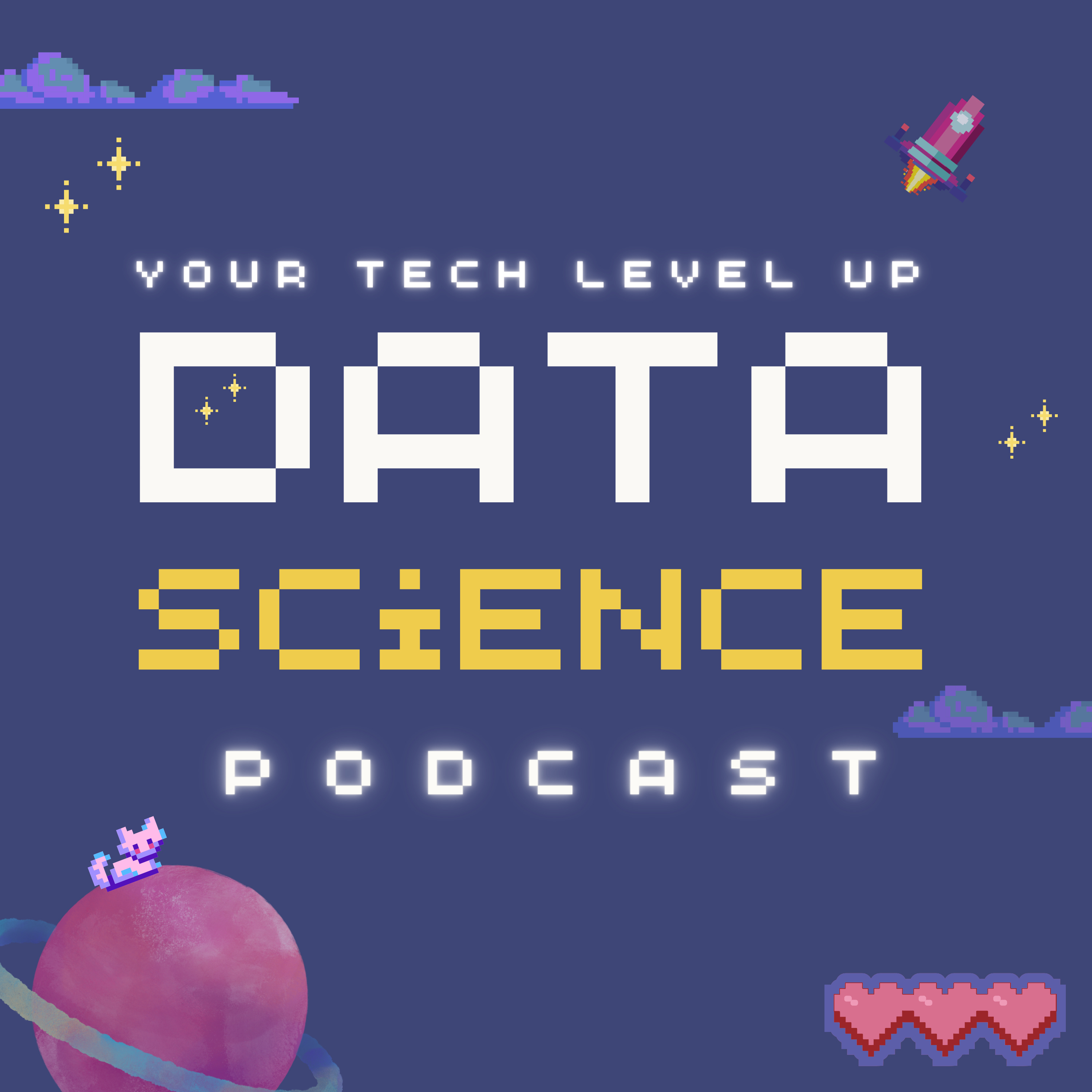
Data Science at HomeDistill data and train faster, better, cheaper (Ep. 128)Come join me in our Discord channel speaking about all things data science.Follow me on Twitch during my live coding sessions usually in Rust and PythonOur SponsorsAmethix use advanced Artificial Intelligence and Machine Learning to build data platforms and predictive engines in domain like finance, healthcare, pharmaceuticals, logistics, energy. Amethix provide solutions to collect and secure data with higher transparency and disintermediation, and build the statistical models that will support your business. ReferencesDataset distillation (official paper) GitHub repo
2020-11-1723 min
Data Science at HomeMachine Learning in Rust: Amadeus with Alec Mocatta [RB] (ep. 127)Come join me in our Discord channel speaking about all things data science.Follow me on Twitch during my live coding sessions usually in Rust and PythonOur SponsorsProtonVPN offers a simple and trusted solution to protect your internet connection and access blocked or restricted websites. All of ProtonVPN’s apps are open source and have been inspected by cybersecurity experts, and Proton is based in Switzerland, home to some of the world's strongest privacy lawsAmethix use advanced Artificial Intelligence and Machine Learning to build data platforms and predictive engines in...
2020-11-1124 min
Data Science at HomeTop-3 ways to put machine learning models into production (Ep. 126)Come join me in our Discord channel speaking about all things data science.Follow me on Twitch during my live coding sessions usually in Rust and PythonOur Sponsorsphysicspodcast.com is not just a physics podcast. But also interviews with scientists, scholars, authors and reflections on the history and future of science and technology are all in the wheelhouse.Amethix use advanced Artificial Intelligence and Machine Learning to build data platforms and predictive engines in domain like finance, healthcare, pharmaceuticals, logistics, energy. Amethix provide solutions to collect and secure data with...
2020-11-0720 min
Data Science at HomeRemove noise from data with deep learning (Ep.125)Come join me in our Discord channel speaking about all things data science.Follow me on Twitch during my live coding sessions usually in Rust and PythonOur SponsorsProtonMail is a secure and private email provider that protects yourmessages with end-to-end encryption and zero-access encryption so that besides you, noone can access them. Amethix use advanced Artificial Intelligence and Machine Learning to build data platforms and predictive engines in domain like finance, healthcare, pharmaceuticals, logistics, energy. Amethix provide solutions to collect and secure data with higher transparency and disintermediation, and build...
2020-11-0323 min
Data Science at HomeWhat is contrastive learning and why it is so powerful? (Ep. 124)Come join me in our Discord channel speaking about all things data science.Follow me on Twitch during my live coding sessions usually in Rust and PythonOur SponsorsThe Monday Apps Challenge is bringing developers around the world together to compete in order to build apps that can improve the way teams work together on monday.comAmethix use advanced Artificial Intelligence and Machine Learning to build data platforms and predictive engines in domain like finance, healthcare, pharmaceuticals, logistics, energy. Amethix provide solutions to collect and secure data with higher transparency...
2020-10-3026 min
Data Science at HomeNeural search (Ep. 123)Come join me in our Discord channel speaking about all things data science.Follow me on Twitch during my live coding sessions usually in Rust and PythonThis episode is supported by Monday.comThe Monday Apps Challenge is bringing developers around the world together to compete in order to build apps that can improve the way teams work together on monday.com. This is a public episode. If you would like to discuss this with other subscribers or get access to bonus episodes, visit datascienceathome.substack...
2020-10-2319 min
Data Science at HomeLet's talk about federated learning (Ep. 122)Let's talk about federated learning. Why is it important? Why large organizations are not ready yet? Come join me in our Discord channel speaking about all things data science.Follow me on Twitch during my live coding sessions usually in Rust and PythonThis episode is supported by Monday.comThe Monday Apps Challenge is bringing developers around the world together to compete in order to build apps that can improve the way teams work together on monday.com.
2020-10-1830 min
Data Science at HomeHow to test machine learning in production (Ep. 121)Come join me in our Discord channel speaking about all things data science.Follow me on Twitch during my live coding sessions usually in Rust and Python This episode is supported by Monday.comMonday.com bring teams together so you can plan, manage and track everything your team is working on in one centralized placeThe monday Apps Challenge is bringing developers around the world together to compete in order to build apps that can improve the way teams work together on monday.c...
2020-10-1128 min
Data Science at HomeWhy synthetic data cannot boost machine learning (Ep. 120)Come join me in our Discord channel speaking about all things data science.Follow me on Twitch during my live coding sessions usually in Rust and PythonThis episode is supported by Women in Tech by Manning Conferences This is a public episode. If you would like to discuss this with other subscribers or get access to bonus episodes, visit datascienceathome.substack.com
2020-09-2623 min
Data Science at HomeMachine learning in production: best practices [LIVE from twitch.tv] (Ep. 119)Hey there! Having the best time of my life ;)This is the first episode I record while I am live on my new Twitch channel :) So much fun!Feel free to follow me for the next live streaming. You can also see me coding machine learning stuff in Rust :)) Don't forget to jump on the usual Discord and have a chatI'll see you there! This is a public episode. If you woul...
2020-09-1637 min
Data Science at HomeTesting in machine learning: checking deeplearning models (Ep. 118)In this episode I speak with Adam Leon Smith, CTO at DragonFly and expert in testing strategies for software and machine learning.We cover testing with deep learning (neuron coverage, threshold coverage, sign change coverage, layer coverage, etc.), combinatorial testing and their practical aspects.On September 15th there will be a live@Manning Rust conference. In one Rust-full day you will attend many talks about what's special about rust, building high performance web services or video game, about web assembly and much more.If you want to meet the tribe, tune in september 15th to the...
2020-09-0418 min
Data Science at HomeTesting in machine learning: generating tests and data (Ep. 117)In this episode I speak with Adam Leon Smith, CTO at DragonFly and expert in testing strategies for software and machine learning. On September 15th there will be a live@Manning Rust conference. In one Rust-full day you will attend many talks about what's special about rust, building high performance web services or video game, about web assembly and much more.If you want to meet the tribe, tune in september 15th to the live@manning rust conference. This is a public episode. If you...
2020-08-2920 min
Data Science at HomeWhy you care about homomorphic encryption (Ep. 116)After deep learning, a new entry is about ready to go on stage. The usual journalists are warming up their keyboards for blogs, news feeds, tweets, in one word, hype.This time it's all about privacy and data confidentiality. The new words, homomorphic encryption. Join and chat with us on the official Discord channel. SponsorsThis episode is supported by Amethix Technologies.Amethix works to create and maximize the impact of the world’s leading corporations, startups, and nonprofits, so they can create a be...
2020-08-1218 min
Data Science at HomeTest-First machine learning (Ep. 115)In this episode I speak about a testing methodology for machine learning models that are supposed to be integrated in production environments. Don't forget to come chat with us in our Discord channel Enjoy the show! --This episode is supported by Amethix Technologies. Amethix works to create and maximize the impact of the world’s leading corporations, startups, and nonprofits, so they can create a better future for everyone they serve. They are a consu...
2020-08-0319 min
Data Science at HomeGPT-3 cannot code (and never will) (Ep. 114)The hype around GPT-3 is alarming and gives and provides us with the awful picture of people misunderstanding artificial intelligence. In response to some comments that claim GPT-3 will take developers' jobs, in this episode I express some personal opinions about the state of AI in generating source code (and in particular GPT-3). If you have comments about this episode or just want to chat, come join us on the official Discord channel. This episode is supported by Amethix Technologies.
2020-07-2619 min
Data Science at HomeMake Stochastic Gradient Descent Fast Again (Ep. 113)There is definitely room for improvement in the family of algorithms of stochastic gradient descent. In this episode I explain a relatively simple method that has shown to improve on the Adam optimizer. But, watch out! This approach does not generalize well.Join our Discord channel and chat with us. ReferencesMore descent, less gradientTaylor Series This is a public episode. If you would like to discuss this with other subscribers or get access to bonus episodes, visit datascienceathome.substack.com
2020-07-2220 min
Data Science at HomeWhat data transformation library should I use? Pandas vs Dask vs Ray vs Modin vs Rapids (Ep. 112)In this episode I speak about data transformation frameworks available for the data scientist who writes Python code. The usual suspect is clearly Pandas, as the most widely used library and de-facto standard. However when data volumes increase and distributed algorithms are in place (according to a map-reduce paradigm of computation), Pandas no longer performs as expected. Other frameworks play a role in such context. In this episode I explain the frameworks that are the best equivalent to Pandas in bigdata contexts.Don't forget to join our Discord channel and comment previous episodes o...
2020-07-1921 min
Data Science at Home[RB] It’s cold outside. Let’s speak about AI winter (Ep. 111)In this episode I speak with Filip Piekniewski about some of the most worth noting findings in AI and machine learning in 2019. As a matter of fact, the entire field of AI has been inflated by hype and claims that are hard to believe. A lot of the promises made a few years ago have revealed quite hard to achieve, if not impossible. Let's stay grounded and realistic on the potential of this amazing field of research, not to bring disillusion in the near future.Join us to our Discord channel to discuss your favorite episode an...
2020-07-0336 min
Data Science at HomeRust and machine learning #4: practical tools (Ep. 110)In this episode I make a non exhaustive list of machine learning tools and frameworks, written in Rust. Not all of them are mature enough for production environments. I believe that community effort can change this very quickly.To make a comparison with the Python ecosystem I will cover frameworks for linear algebra (numpy), dataframes (pandas), off-the-shelf machine learning (scikit-learn), deep learning (tensorflow) and reinforcement learning (openAI).Rust is the language of the future.Happy coding! ReferenceBLAS linear algebra https://en.wikipedia.org/wiki/Basic_Linear_Algebra_SubprogramsR...
2020-06-2924 min
Data Science at HomeRust and machine learning #3 with Alec Mocatta (Ep. 109)In the 3rd episode of Rust and machine learning I speak with Alec Mocatta. Alec is a +20 year experience professional programmer who has been spending time at the interception of distributed systems and data analytics. He's the founder of two startups in the distributed system space and author of Amadeus, an open-source framework that encourages you to write clean and reusable code that works, regardless of data scale, locally or distributed across a cluster.Only for June 24th, LDN *Virtual* Talks June 2020 with Bippit (Alec speaking about Amadeus) This is a...
2020-06-2223 min
Data Science at HomeRust and machine learning #2 with Luca Palmieri (Ep. 108)In the second episode of Rust and Machine learning I am speaking with Luca Palmieri, who has been spending a large part of his career at the interception of machine learning and data engineering. In addition, Luca contributed to several projects closer to the machine learning community using the Rust programming language. Linfa is an ambitious project that definitely deserves the attention of the data science community (and it's written in Rust, with Python bindings! How cool??!). ReferencesSeries Announcement - Zero to Production in Rust https://www.lpalmieri.com/posts/2020-05-10...
2020-06-1927 min
Data Science at HomeRust and machine learning #1 (Ep. 107)This is the first episode of a series about the Rust programming language and the role it can play in the machine learning field.Rust is one of the most beautiful languages I have ever studied so far. I personally come from the C programming language, though for professional activities in machine learning I had to switch to the loved and hated Python language.This episode is clearly not providing you with an exhaustive list of the benefits of Rust, nor its capabilities. For this you can check the references and start getting...
2020-06-1722 min
Data Science at HomeProtecting workers with artificial intelligence (with Sandeep Pandya CEO Everguard.ai)(Ep. 106)In this episode I have a chat with Sandeep Pandya, CEO at Everguard.ai a company that uses sensor fusion, computer vision and more to provide safer working environments to workers in heavy industry.Sandeep is a senior executive who can hide the complexity of the topic with great talent. This episode is supported by Pryml.io Pryml is an enterprise-scale platform to synthesise data and deploy applications built on that data back to a production environment.Test ideas. Launch new products. Fast. Secure. This is a public episode. If y...
2020-06-1516 min
Data Science at HomeCompressing deep learning models: rewinding (Ep.105)As a continuation of the previous episode in this one I cover the topic about compressing deep learning models and explain another simple yet fantastic approach that can lead to much smaller models that still perform as good as the original one.Don't forget to join our Slack channel and discuss previous episodes or propose new ones.This episode is supported by Pryml.io Pryml is an enterprise-scale platform to synthesise data and deploy applications built on that data back to a production environment. ReferencesComparing R...
2020-06-0115 min
Data Science at HomeCompressing deep learning models: distillation (Ep.104)Using large deep learning models on limited hardware or edge devices is definitely prohibitive. There are methods to compress large models by orders of magnitude and maintain similar accuracy during inference.In this episode I explain one of the first methods: knowledge distillation Come join us on Slack ReferenceDistilling the Knowledge in a Neural Network https://arxiv.org/abs/1503.02531Knowledge Distillation and Student-Teacher Learning for Visual Intelligence: A Review and New Outlooks https://arxiv.org/abs/2004.05937 This is a public episode. If you would like t...
2020-05-2022 min
Data Science at HomePandemics and the risks of collecting data (Ep. 103)Codiv-19 is an emergency. True. Let's just not prepare for another emergency about privacy violation when this one is over. Join our new Slack channel This episode is supported by Proton. You can check them out at protonmail.com or protonvpn.com This is a public episode. If you would like to discuss this with other subscribers or get access to bonus episodes, visit datascienceathome.substack.com
2020-05-0820 min
Data Science at HomeWhy average can get your predictions very wrong (ep. 102)Whenever people reason about probability of events, they have the tendency to consider average values between two extremes. In this episode I explain why such a way of approximating is wrong and dangerous, with a numerical example.We are moving our community to Slack. See you there! This is a public episode. If you would like to discuss this with other subscribers or get access to bonus episodes, visit datascienceathome.substack.com
2020-04-1914 min
Data Science at HomeActivate deep learning neurons faster with Dynamic RELU (ep. 101)In this episode I briefly explain the concept behind activation functions in deep learning. One of the most widely used activation function is the rectified linear unit (ReLU). While there are several flavors of ReLU in the literature, in this episode I speak about a very interesting approach that keeps computational complexity low while improving performance quite consistently.This episode is supported by pryml.io. At pryml we let companies share confidential data. Visit our website.Don't forget to join us on discord channel to propose new episode or discuss the previous ones. ...
2020-04-0122 min
Data Science at HomeWARNING!! Neural networks can memorize secrets (ep. 100)One of the best features of neural networks and machine learning models is to memorize patterns from training data and apply those to unseen observations. That's where the magic is. However, there are scenarios in which the same machine learning models learn patterns so well such that they can disclose some of the data they have been trained on. This phenomenon goes under the name of unintended memorization and it is extremely dangerous.Think about a language generator that discloses the passwords, the credit card numbers and the social security numbers of the records it has b...
2020-03-2324 min
Data Science at HomeAttacks to machine learning model: inferring ownership of training data (Ep. 99)In this episode I explain a very effective technique that allows one to infer the membership of any record at hand to the (private) training dataset used to train the target model. The effectiveness of such technique is due to the fact that it works on black-box models of which there is no access to the data used for training, nor model parameters and hyperparameters. Such a scenario is very realistic and typical of machine learning as a service APIs. This episode is supported by pryml.io, a platform I am personally working on that enables d...
2020-03-1419 min
Data Science at HomeDon't be naive with data anonymization (Ep. 98)Masking, obfuscating, stripping, shuffling. All the above techniques try to do one simple thing: keeping the data private while sharing it with third parties. Unfortunately, they are not the silver bullet to confidentiality. All the players in the synthetic data space rely on simplistic techniques that are not secure, might not be compliant and risky for production. At pryml we do things differently. This is a public episode. If you would like to discuss this with other subscribers or get access to bonus episodes, visit datascienceathome.substack.com
2020-03-0813 min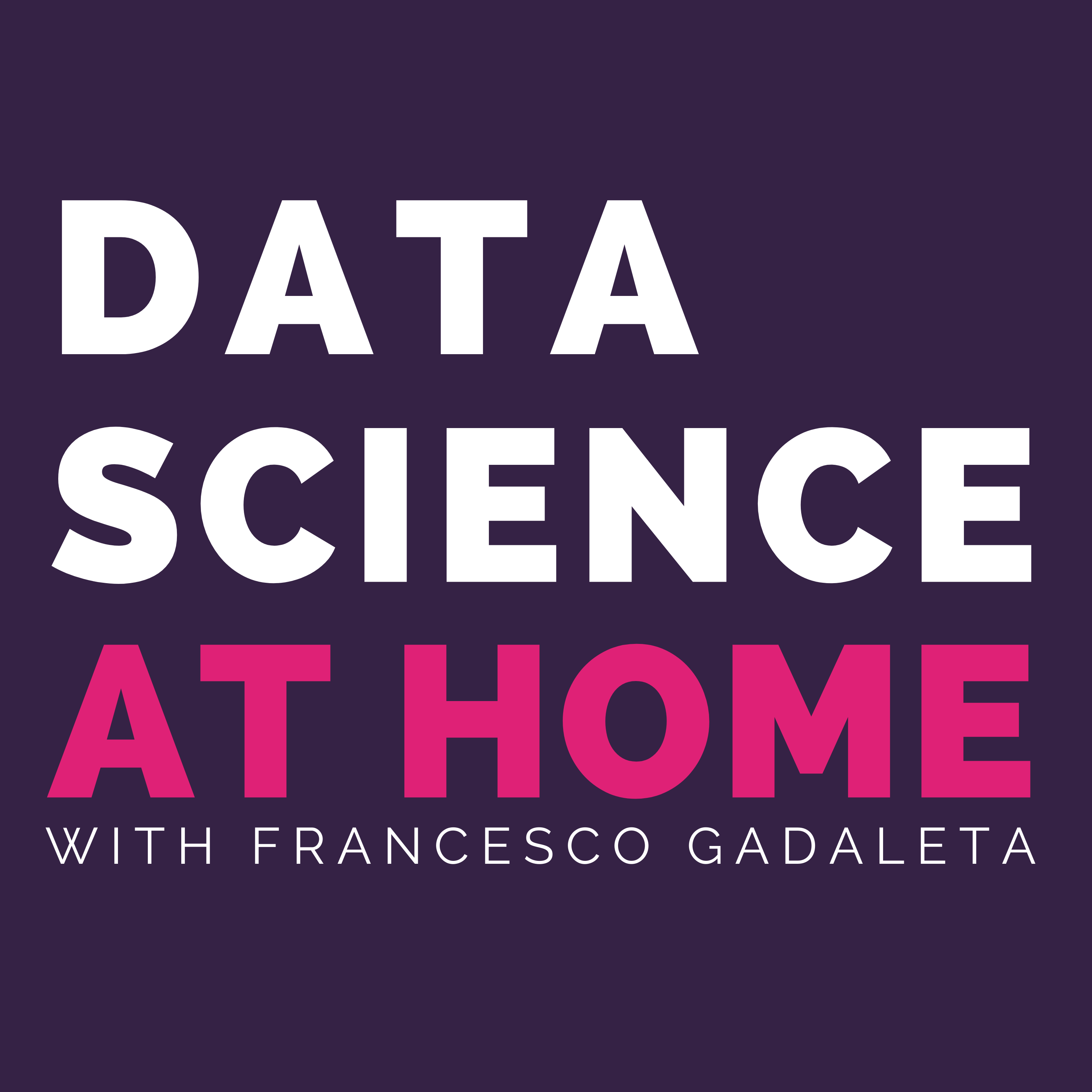
Data Science at HomeWhy sharing real data is dangerous (Ep. 97)There are very good reasons why a financial institution should never share their data. Actually, they should never even move their data. Ever.In this episode I explain you why. This is a public episode. If you would like to discuss this with other subscribers or get access to bonus episodes, visit datascienceathome.substack.com
2020-03-0110 min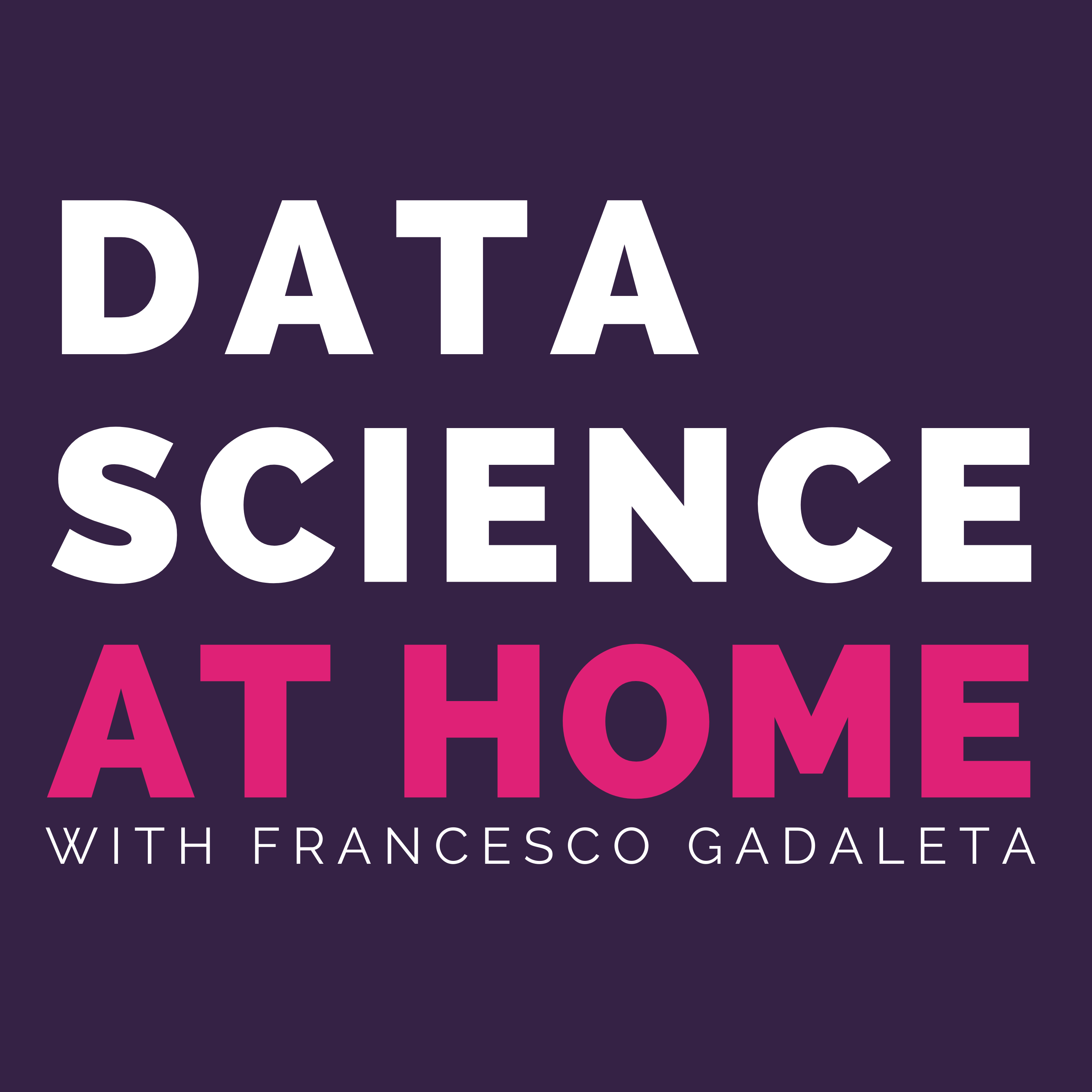
Data Science at HomeBuilding reproducible machine learning in production (Ep. 96)Building reproducible models is essential for all those scenarios in which the lead developer is collaborating with other team members. Reproducibility in machine learning shall not be an art, rather it should be achieved via a methodical approach. In this episode I give a few suggestions about how to make your ML models reproducible and keep your workflow as smooth.Enjoy the show!Come visit us on our discord channel and have a chat This is a public episode. If you would like to discuss this with other subscribers or get access to b...
2020-02-2214 min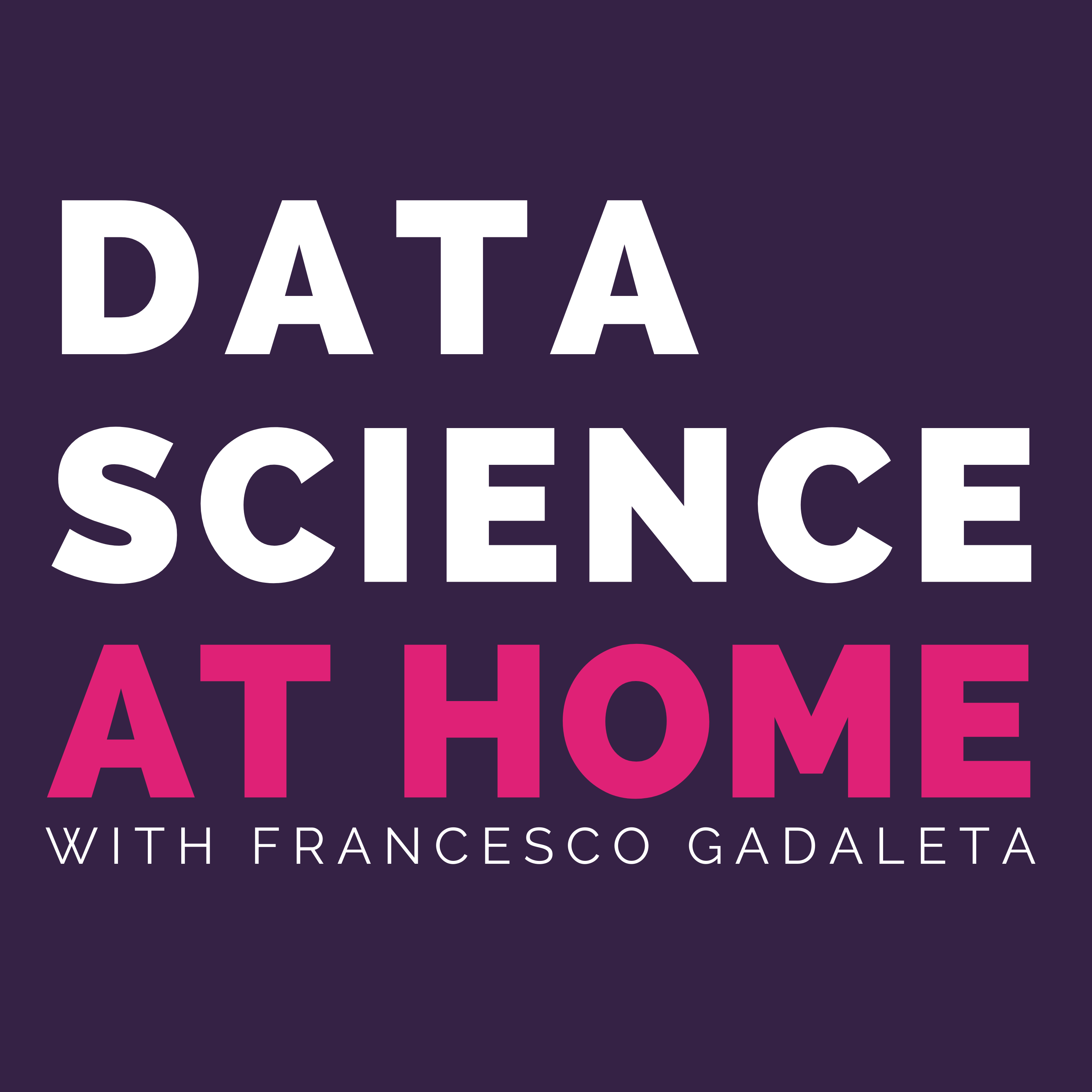
Data Science at HomeBridging the gap between data science and data engineering: metrics (Ep. 95)Data science and data engineering are usually two different departments in organisations. Bridging the gap between the two is essential to success. Many times the brilliant applications created by data scientists don't find a match in production, just because they are not production-ready.In this episode I have a talk with Daan Gerits, co-founder and CTO at Pryml.io This is a public episode. If you would like to discuss this with other subscribers or get access to bonus episodes, visit datascienceathome.substack.com
2020-02-1413 min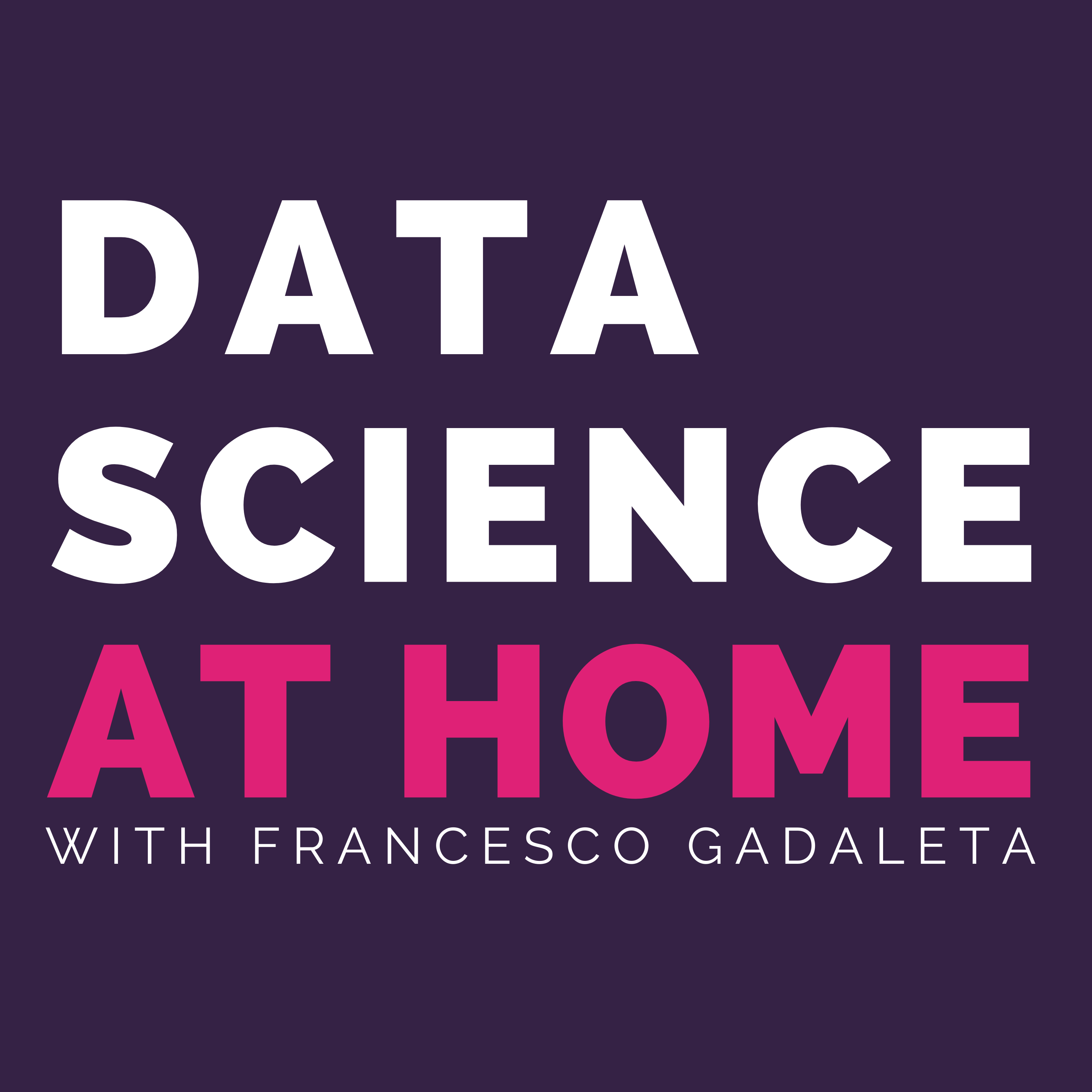
Data Science at HomeA big welcome to Pryml: faster machine learning applications to production (Ep. 94)Why so much silence? Building a company! That's why :) I am building pryml, a platform that allows data scientists build their applications on data they cannot get access to. This is the first of a series of episodes in which I will speak about the technology and the challenges we are facing while we build it. Happy listening and stay tuned! This is a public episode. If you would like to discuss this with other subscribers or get access to bonus episodes, visit datascienceathome.substack.com
2020-02-0709 min
Data Science at HomeIt's cold outside. Let's speak about AI winter (Ep. 93)In the last episode of 2019 I speak with Filip Piekniewski about some of the most worth noting findings in AI and machine learning in 2019. As a matter of fact, the entire field of AI has been inflated by hype and claims that are hard to believe. A lot of the promises made a few years ago have revealed quite hard to achieve, if not impossible. Let's stay grounded and realistic on the potential of this amazing field of research, not to bring disillusion in the near future.
Join us to our Discord channel to discuss your favorite ep...
2019-12-3136 min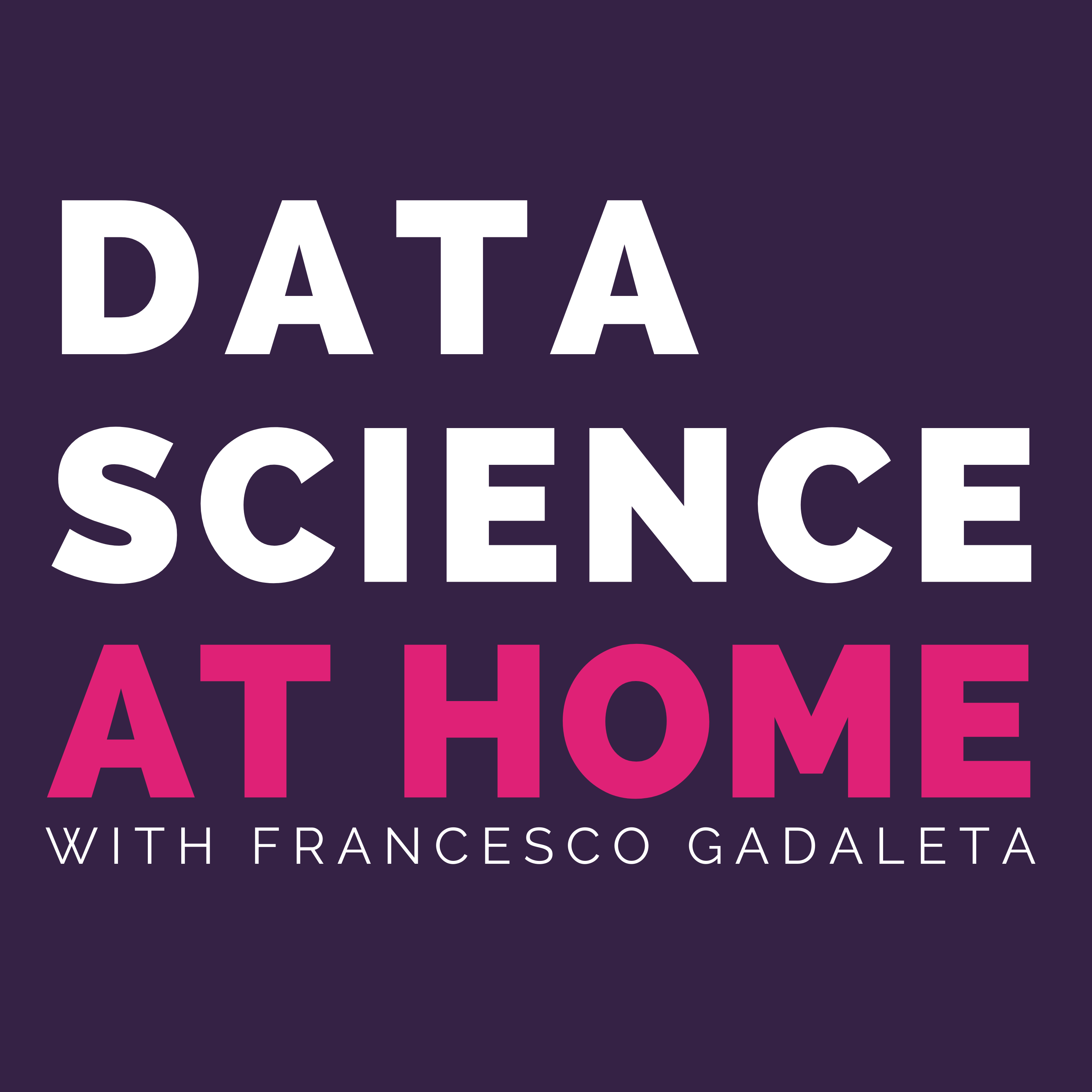
Data Science at HomeIt's cold outside. Let's speak about AI winter (Ep. 93)In the last episode of 2019 I speak with Filip Piekniewski about some of the most worth noting findings in AI and machine learning in 2019. As a matter of fact, the entire field of AI has been inflated by hype and claims that are hard to believe. A lot of the promises made a few years ago have revealed quite hard to achieve, if not impossible. Let's stay grounded and realistic on the potential of this amazing field of research, not to bring disillusion in the near future.Join us to our Discord channel to discuss your fa...
2019-12-3136 min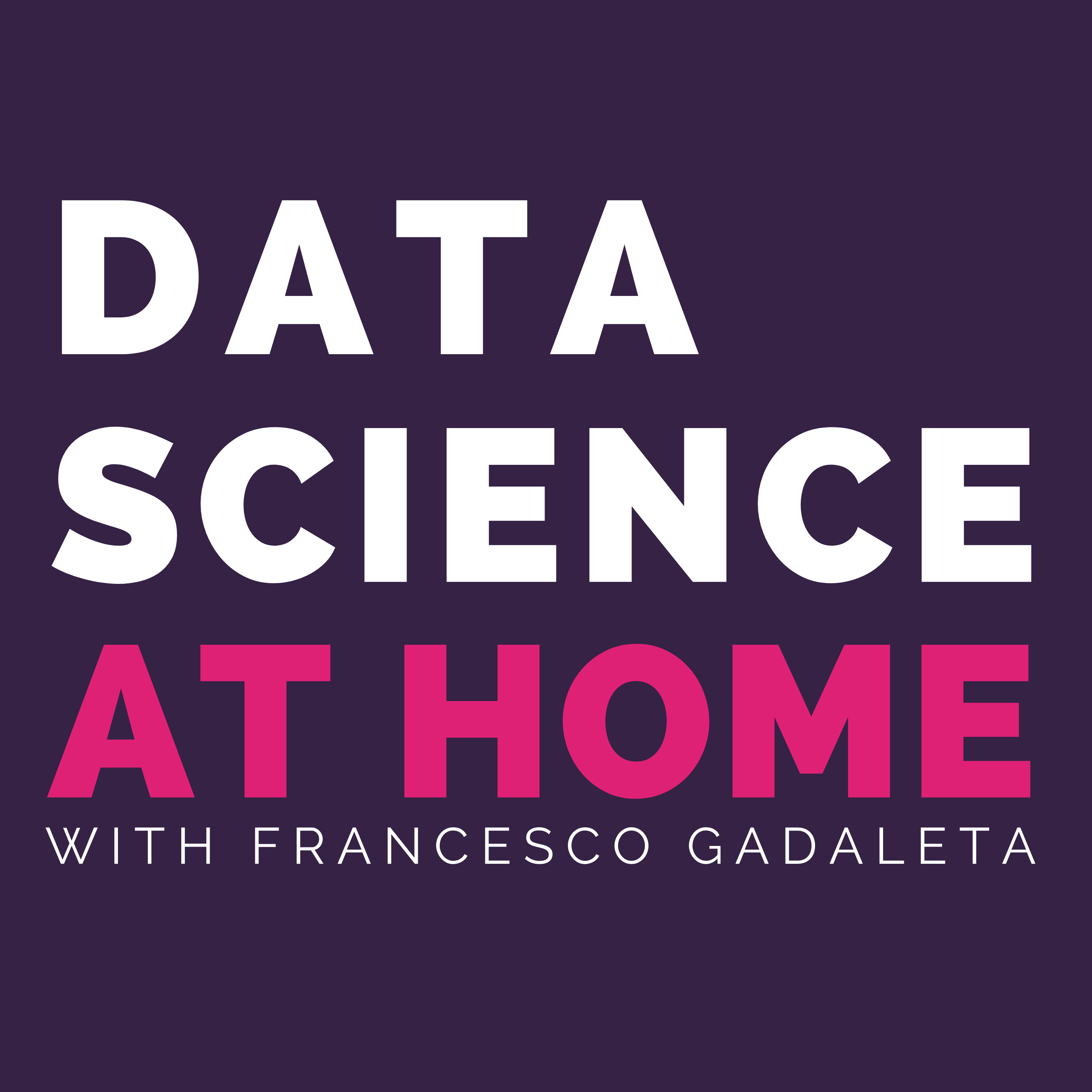
Data Science at HomeThe dark side of AI: bias in the machine (Ep. 92) This is the fourth and last episode of mini series "The dark side of AI". I am your host Francesco and I’m with Chiara Tonini from London. The title of today’s episode is Bias in the machine C: Francesco, today we are starting with an infuriating discussion. Are you ready to be angry? F: yeah sure is this about brexit? No, I don’t talk about that. In 1986 the New York City’s Rockefeller University conducted a study on breast and uter...
2019-12-2820 min
Data Science at HomeThe dark side of AI: bias in the machine (Ep. 92)
This is the fourth and last episode of mini series "The dark side of AI".
I am your host Francesco and I’m with Chiara Tonini from London. The title of today’s episode is Bias in the machine
C: Francesco, today we are starting with an infuriating discussion. Are you ready to be angry?
F: yeah sure is this about brexit?
No, I don’t talk about that. In 1986 the New York City’s Rockefeller University conducted a study on breast and uterine cancers and the...
2019-12-2820 min
Data Science at HomeThe dark side of AI: metadata and the death of privacy (Ep. 91)Get in touch with usJoin the discussion about data science, machine learning and artificial intelligence on our Discord server Episode transcriptWe always hear the word “metadata”, usually in a sentence that goes like this Your Honor, I swear, we were not collecting users data, just metadata. Usually the guy saying this sentence is Zuckerberg, but could be anybody from Amazon or Google. “Just” metadata, so no problem. This is one of the bigges...
2019-12-2323 min
Data Science at HomeThe dark side of AI: metadata and the death of privacy (Ep. 91)
Get in touch with us
Join the discussion about data science, machine learning and artificial intelligence on our Discord server
Episode transcript
We always hear the word “metadata”, usually in a sentence that goes like this
Your Honor, I swear, we were not collecting users data, just metadata.
Usually the guy saying this sentence is Zuckerberg, but could be anybody from Amazon or Google. “Just” metadata, so no problem. This is one of the biggest lies about the reality of data collection.
F: Ok the first question is, what the h...
2019-12-2323 min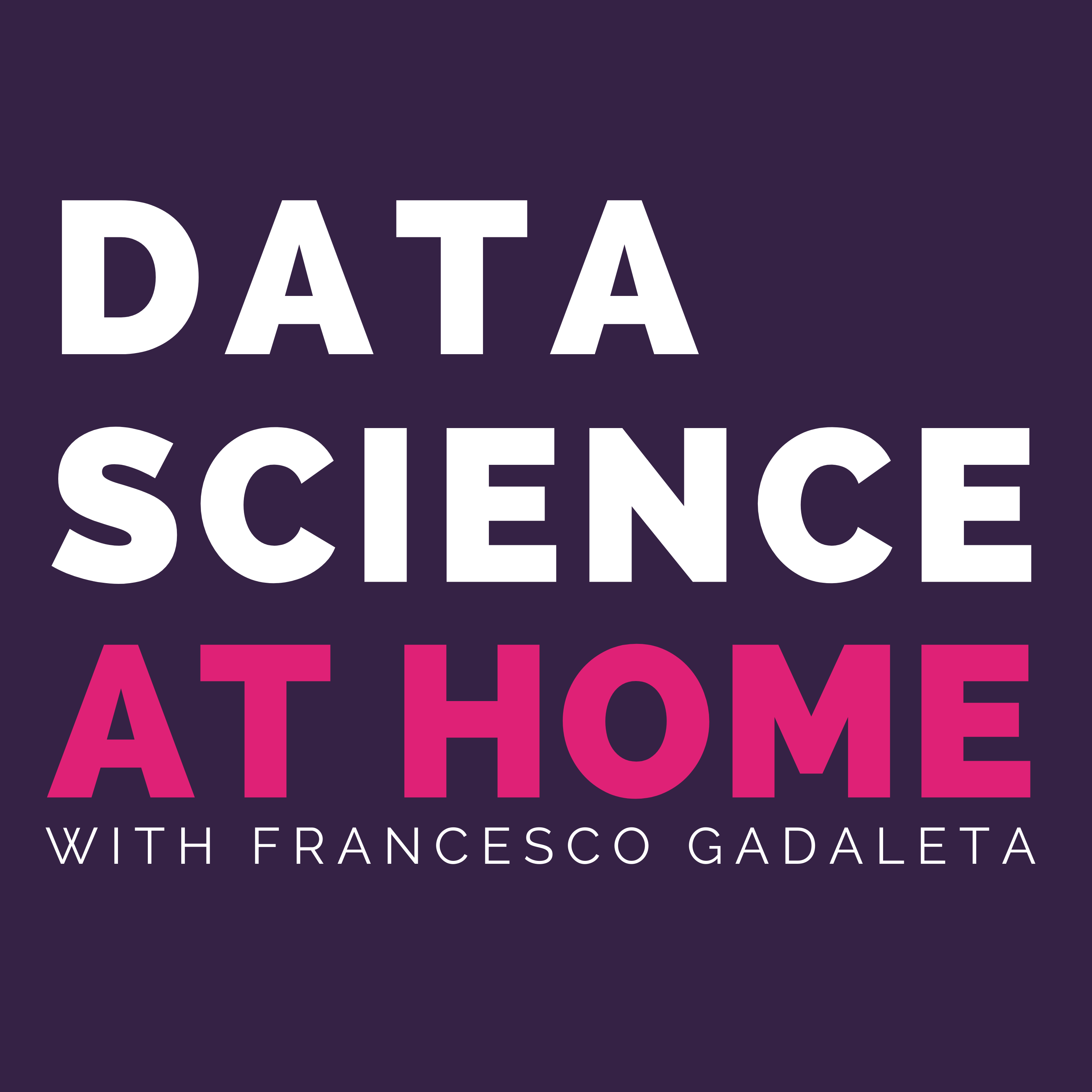
Data Science at HomeThe dark side of AI: recommend and manipulate (Ep. 90)In 2017 a research group at the University of Washington did a study on the Black Lives Matter movement on Twitter. They constructed what they call a “shared audience graph” to analyse the different groups of audiences participating in the debate, and found an alignment of the groups with the political left and political right, as well as clear alignments with groups participating in other debates, like environmental issues, abortion issues and so on. In simple terms, someone who is pro-environment, pro-abortion, left-leaning, is also supportive of the Black Lives Matter movement, and viceversa.F: Ok, this seems to make...
2019-12-1120 min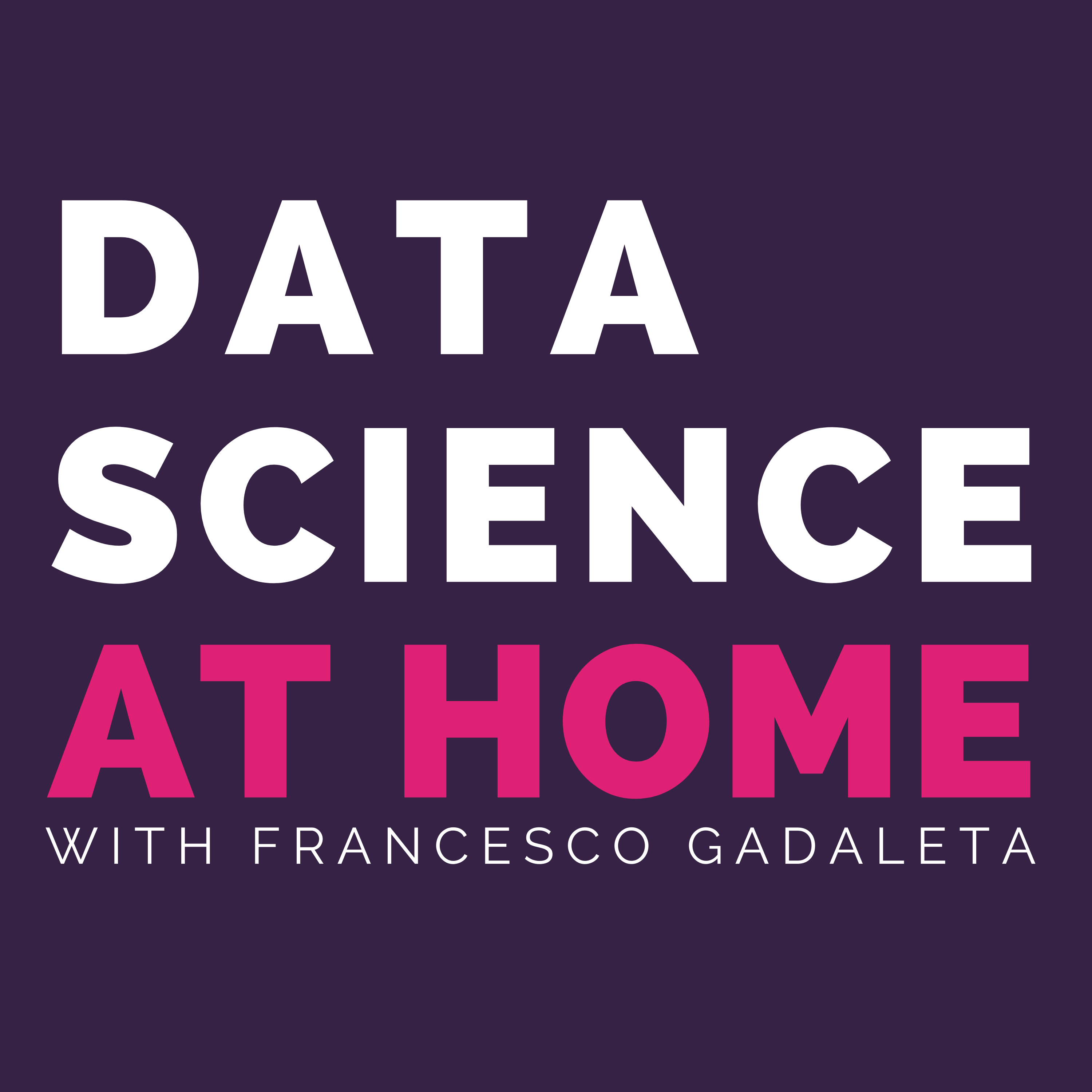
Data Science at HomeThe dark side of AI: social media and the optimization of addiction (Ep. 89)Chamath Palihapitiya, former Vice President of User Growth at Facebook, was giving a talk at Stanford University, when he said this: “I feel tremendous guilt. The short-term, dopamine-driven feedback loops that we have created are destroying how society works ”.He was referring to how social media platforms leverage our neurological build-up in the same way slot machines and cocaine do, to keep us using their products as much as possible. They turn us into addicts. F: how many times do you check your Facebook in a day?I am...
2019-12-0322 min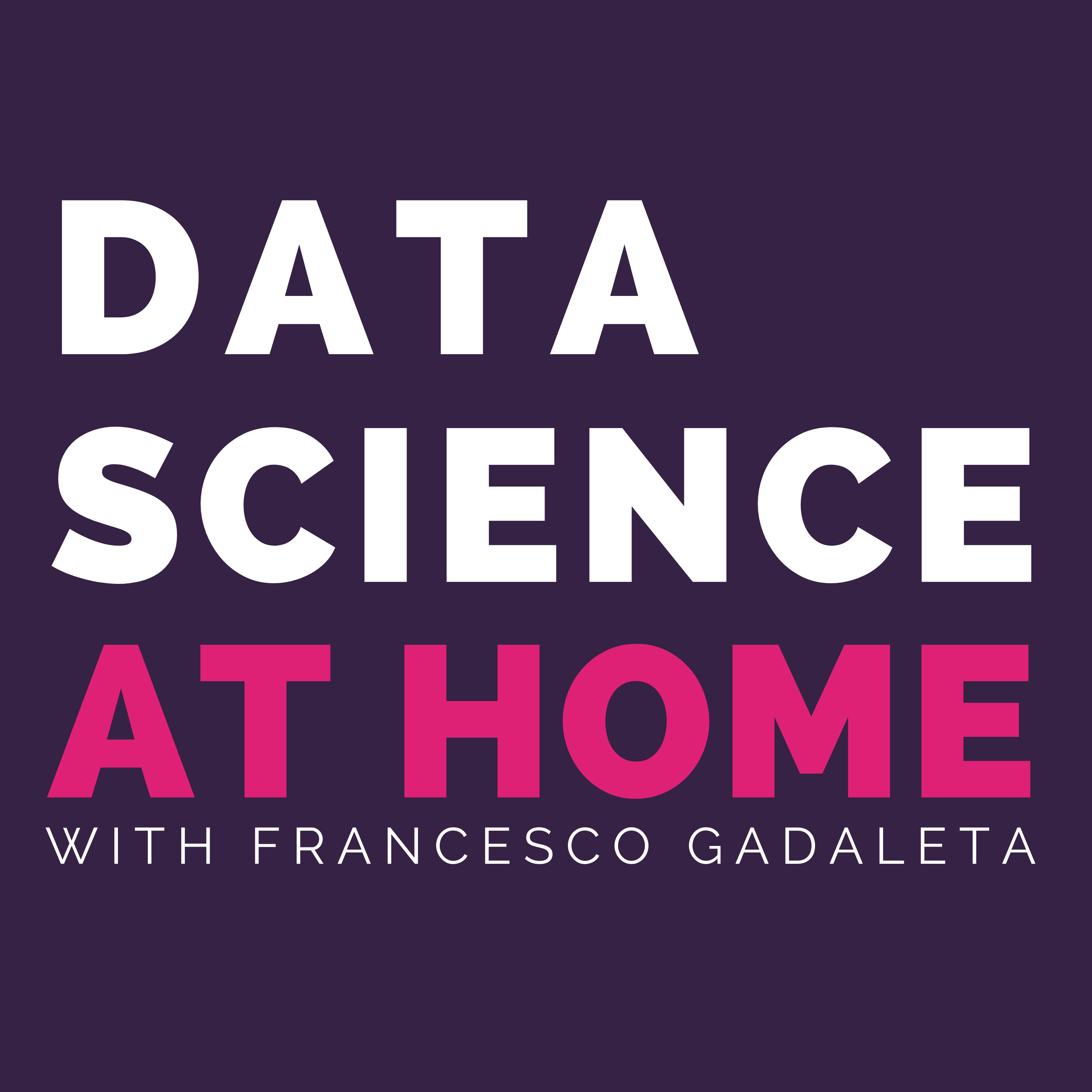
Data Science at HomeMore powerful deep learning with transformers (Ep. 84) (Rebroadcast)Some of the most powerful NLP models like BERT and GPT-2 have one thing in common: they all use the transformer architecture. Such architecture is built on top of another important concept already known to the community: self-attention.In this episode I explain what these mechanisms are, how they work and why they are so powerful.Don't forget to subscribe to our Newsletter or join the discussion on our Discord server ReferencesAttention is all you need https://arxiv.org/abs/1706.03762The illustrated transformer https://jalammar.github.io/illustrated-transformer...
2019-11-2737 min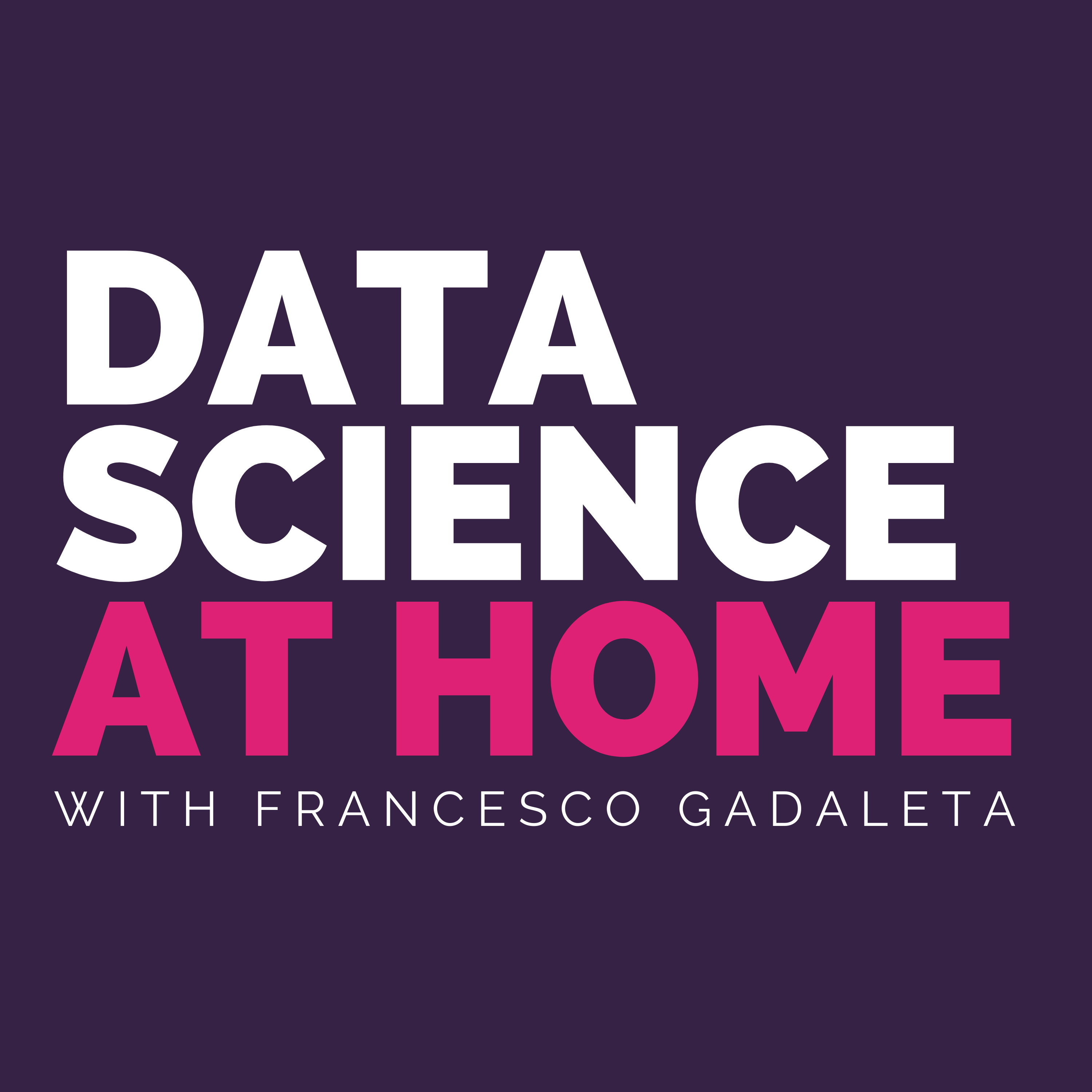
Data Science at HomeHow to improve the stability of training a GAN (Ep. 88)Generative Adversarial Networks or GANs are very powerful tools to generate data. However, training a GAN is not easy. More specifically, GANs suffer of three major issues such as instability of the training procedure, mode collapse and vanishing gradients. In this episode I not only explain the most challenging issues one would encounter while designing and training Generative Adversarial Networks. But also some methods and architectures to mitigate them. In addition I elucidate the three specific strategies that researchers are considering to improve the accuracy and the reliability of GANs. ...
2019-11-1828 min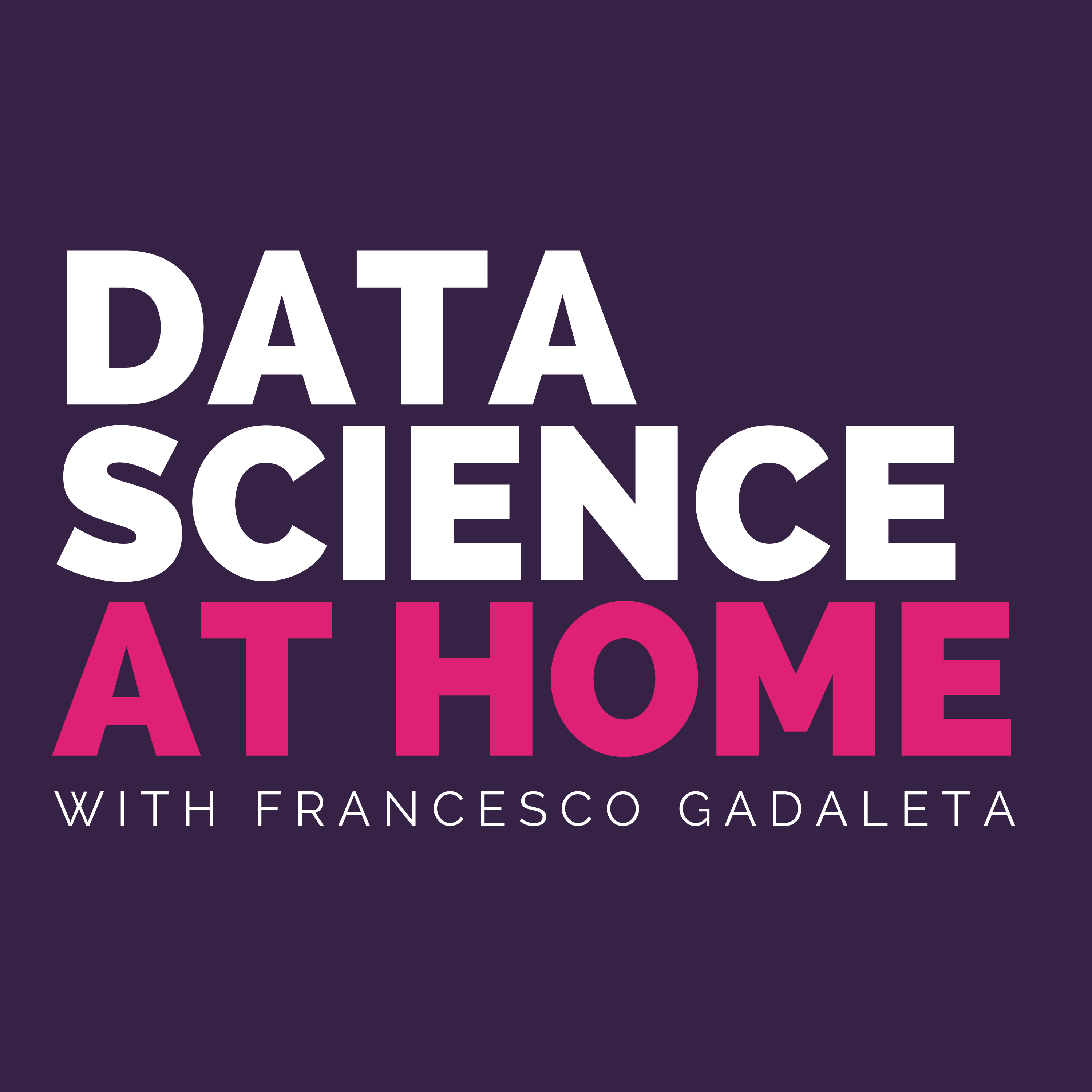
Data Science at HomeWhat if I train a neural network with random data? (with Stanisław Jastrzębski) (Ep. 87)What happens to a neural network trained with random data? Are massive neural networks just lookup tables or do they truly learn something? Today’s episode will be about memorisation and generalisation in deep learning, with Stanislaw Jastrzębski from New York University.Stan spent two summers as a visiting student with Prof. Yoshua Bengio and has been working on Understanding and improving how deep network generaliseRepresentation LearningNatural Language ProcessingComputer Aided Drug Design What makes deep learning unique?...
2019-11-1219 min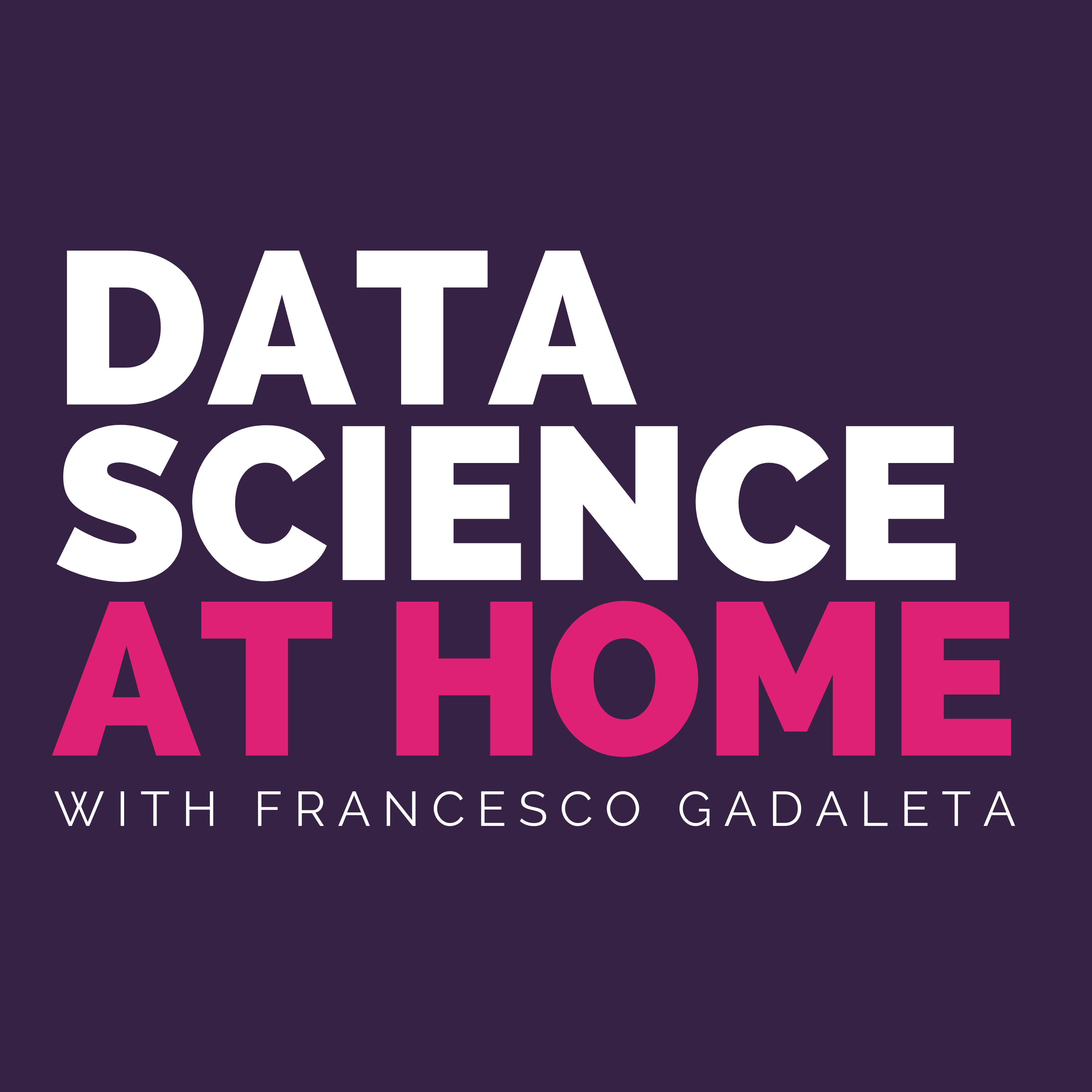
Data Science at HomeDeeplearning is easier when it is illustrated (with Jon Krohn) (Ep. 86)In this episode I speak with Jon Krohn, author of Deeplearning Illustrated a book that makes deep learning easier to grasp. We also talk about some important guidelines to take into account whenever you implement a deep learning model, how to deal with bias in machine learning used to match jobs to candidates and the future of AI. You can purchase the book from informit.com/dsathome with code DSATHOME and get 40% off books/eBooks and 60% off video training This is a public episode. If you would like to discuss this with other subscribers or get a...
2019-11-0544 min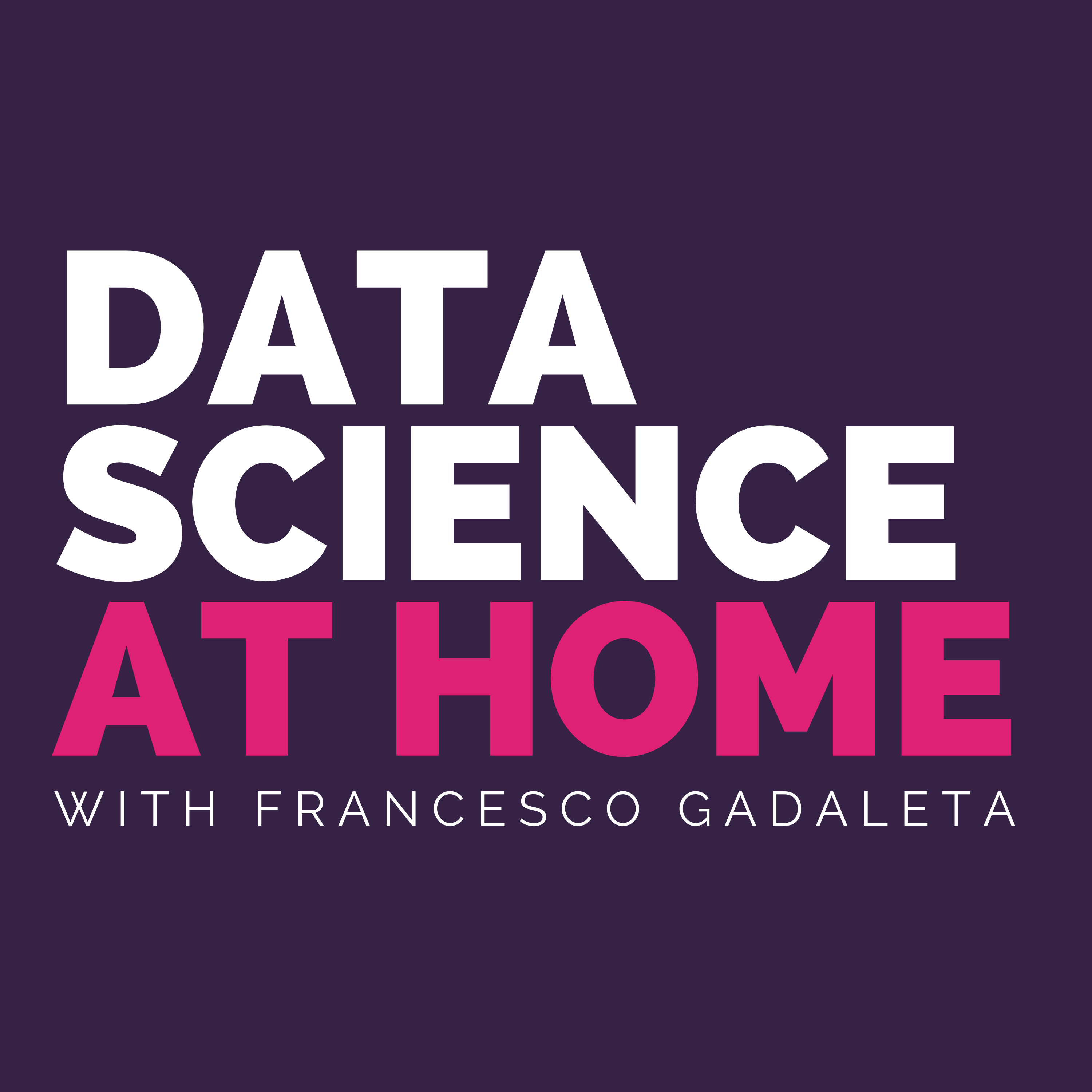
Data Science at Home[RB] How to generate very large images with GANs (Ep. 85)Join the discussion on our Discord serverIn this episode I explain how a research group from the University of Lubeck dominated the curse of dimensionality for the generation of large medical images with GANs. The problem is not as trivial as it seems. Many researchers have failed in generating large images with GANs before. One interesting application of such approach is in medicine for the generation of CT and X-ray images.Enjoy the show! ReferencesMulti-scale GANs for Memory-efficient Generation of High Resolution Medical Images https://arxiv.org/ab...
2019-11-0414 min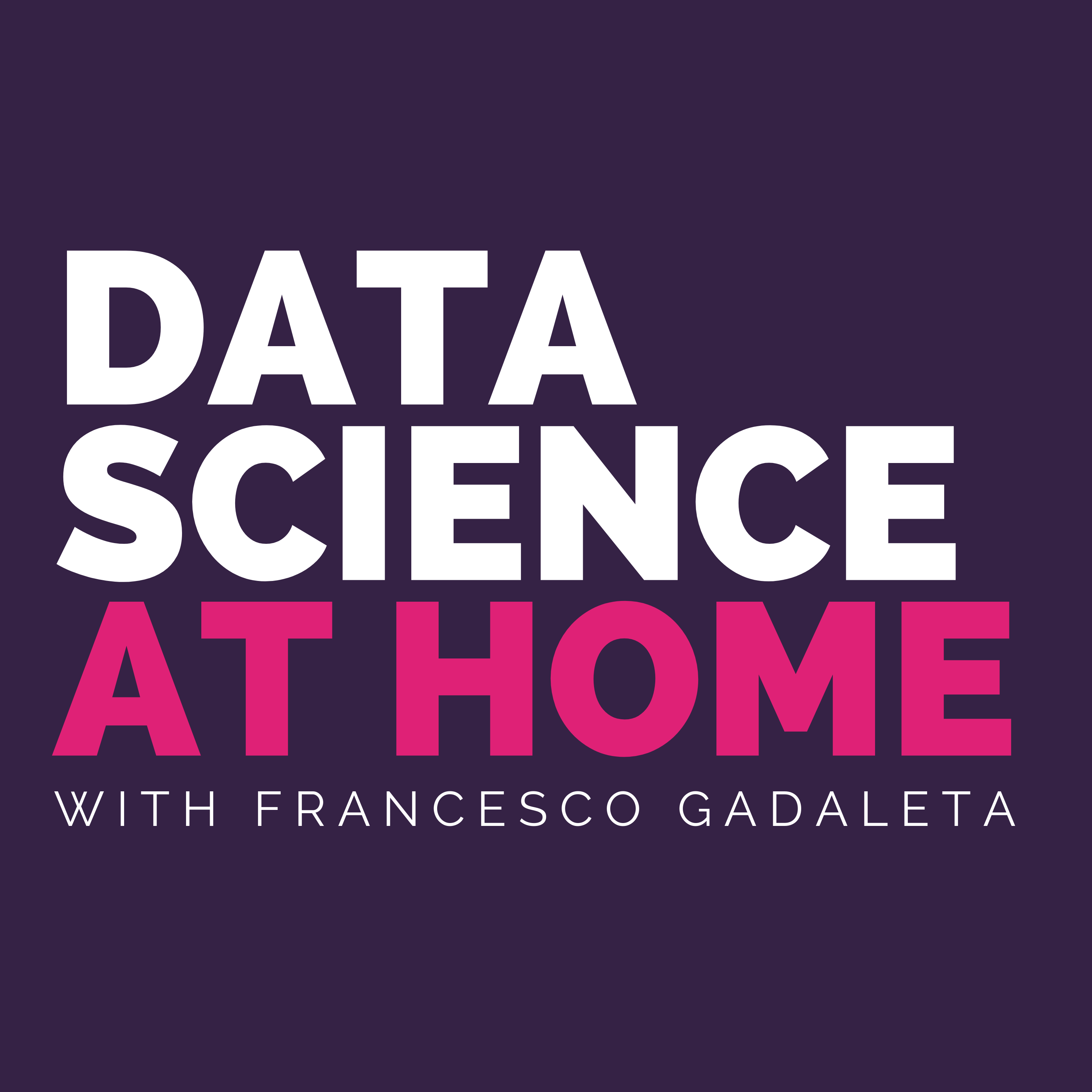
Data Science at HomeMore powerful deep learning with transformers (Ep. 84)Some of the most powerful NLP models like BERT and GPT-2 have one thing in common: they all use the transformer architecture. Such architecture is built on top of another important concept already known to the community: self-attention.In this episode I explain what these mechanisms are, how they work and why they are so powerful.Don't forget to subscribe to our Newsletter or join the discussion on our Discord server ReferencesAttention is all you need https://arxiv.org/abs/1706.03762The illustrated transformer https://jalammar.github.io/illustrated-transformer...
2019-10-2737 min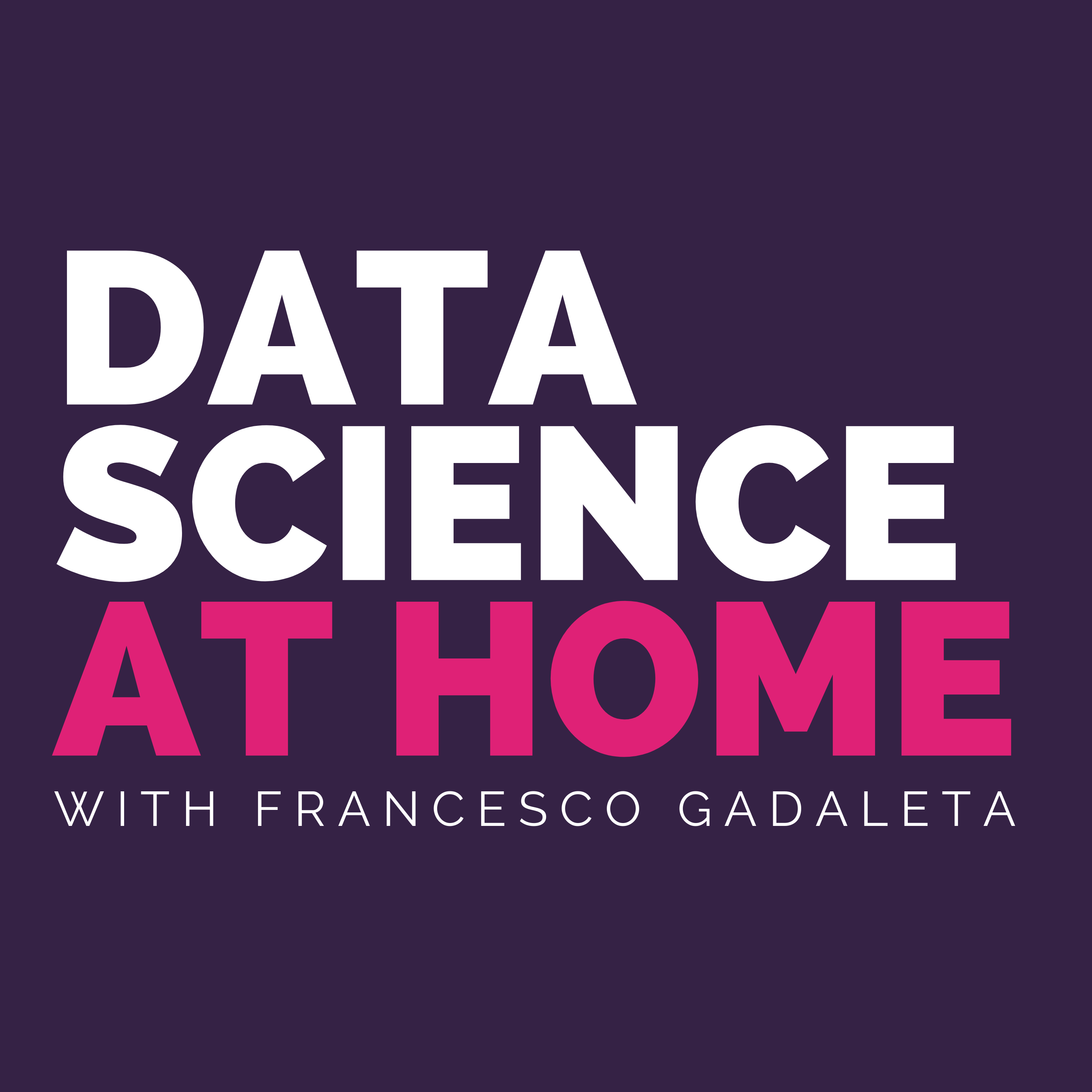
Data Science at Home[RB] Replicating GPT-2, the most dangerous NLP model (with Aaron Gokaslan) (Ep. 83)Join the discussion on our Discord server In this episode, I am with Aaron Gokaslan, computer vision researcher, AI Resident at Facebook AI Research. Aaron is the author of OpenGPT-2, a parallel NLP model to the most discussed version that OpenAI decided not to release because too accurate to be published. We discuss about image-to-image translation, the dangers of the GPT-2 model and the future of AI. Moreover, Aaron provides some very interesting links and demos that will blow your mind!Enjoy the show! References...
2019-10-1837 min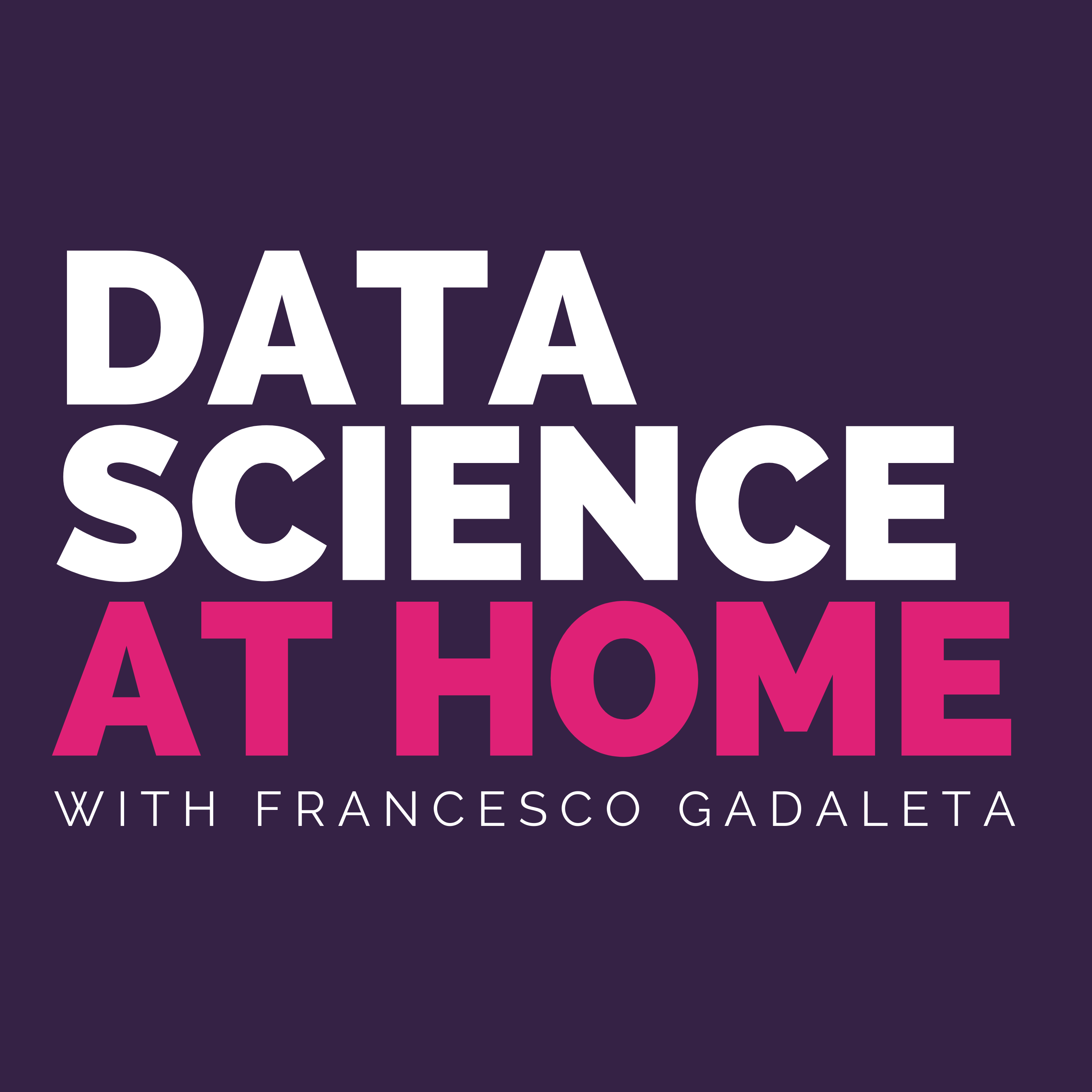
Data Science at HomeWhat is wrong with reinforcement learning? (Ep. 82)Join the discussion on our Discord server After reinforcement learning agents doing great at playing Atari video games, Alpha Go, doing financial trading, dealing with language modeling, let me tell you the real story here.In this episode I want to shine some light on reinforcement learning (RL) and the limitations that every practitioner should consider before taking certain directions. RL seems to work so well! What is wrong with it? Are you a listener of Data Science at Home podcast? A reader of the Amethix Blog...
2019-10-1521 min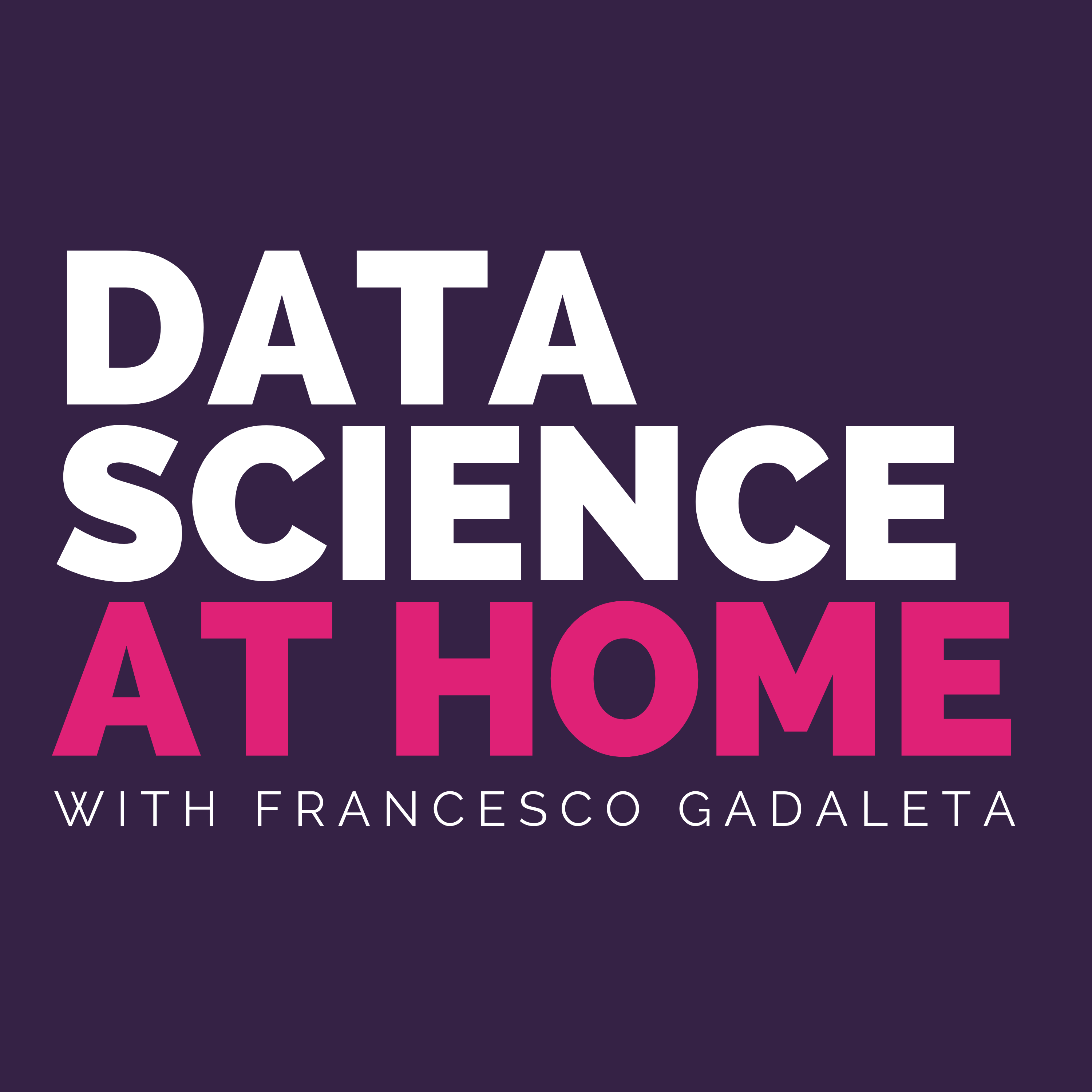
Data Science at HomeHave you met Shannon? Conversation with Jimmy Soni and Rob Goodman about one of the greatest minds in history (Ep. 81)Join the discussion on our Discord server In this episode I have an amazing conversation with Jimmy Soni and Rob Goodman, authors of “A mind at play”, a book entirely dedicated to the life and achievements of Claude Shannon. Claude Shannon does not need any introduction. But for those who need a refresh, Shannon is the inventor of the information age. Have you heard of binary code, entropy in information theory, data compression theory (the stuff behind mp3, mpg, zip, etc.), error correcting codes (the stuff that makes your RAM work we...
2019-10-1032 min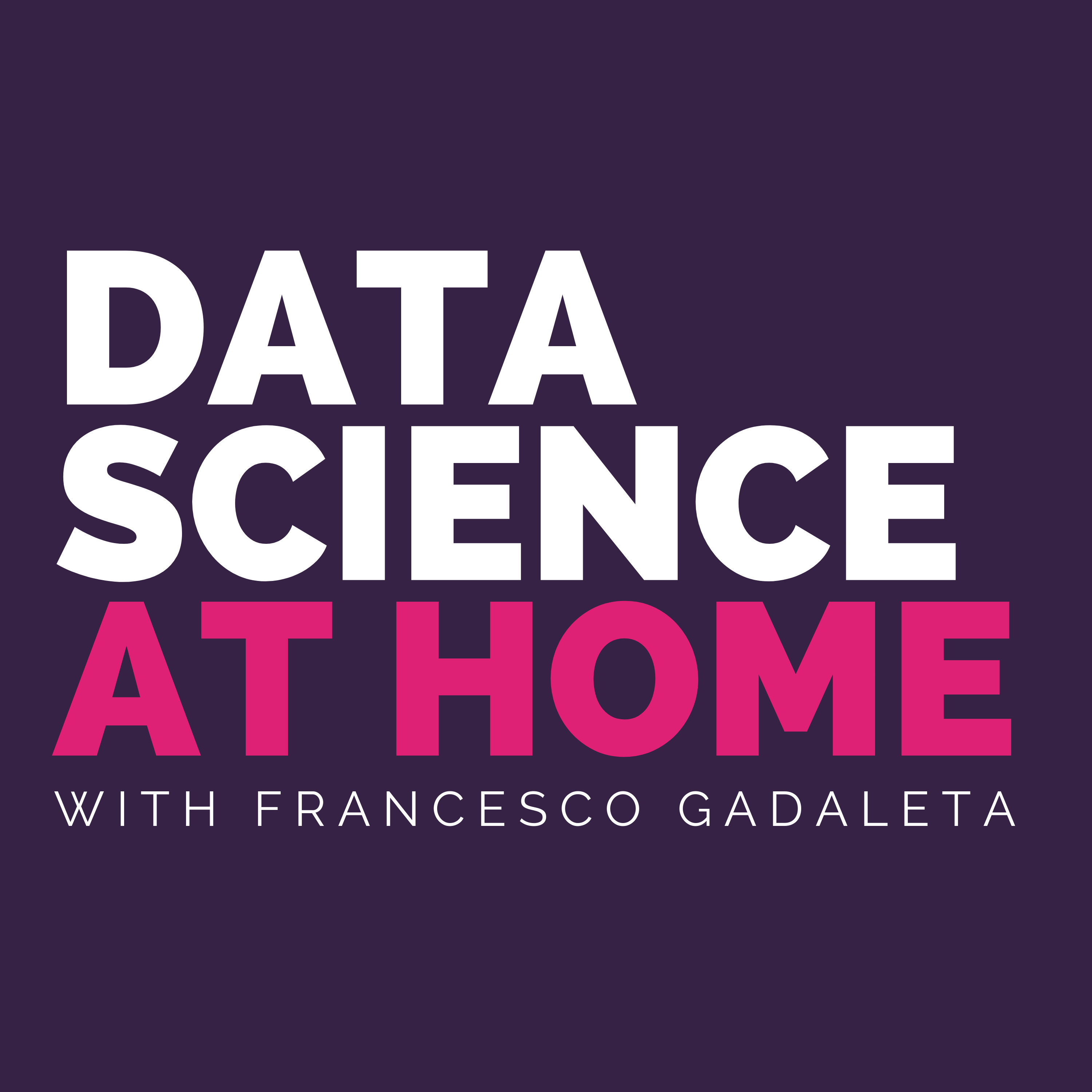
Data Science at HomeAttacking machine learning for fun and profit (with the authors of SecML Ep. 80)Join the discussion on our Discord serverAs ML plays a more and more relevant role in many domains of everyday life, it’s quite obvious to see more and more attacks to ML systems. In this episode we talk about the most popular attacks against machine learning systems and some mitigations designed by researchers Ambra Demontis and Marco Melis, from the University of Cagliari (Italy). The guests are also the authors of SecML, an open-source Python library for the security evaluation of Machine Learning (ML) algorithms. Both Ambra and Marco are members of research group PRAla...
2019-10-0134 min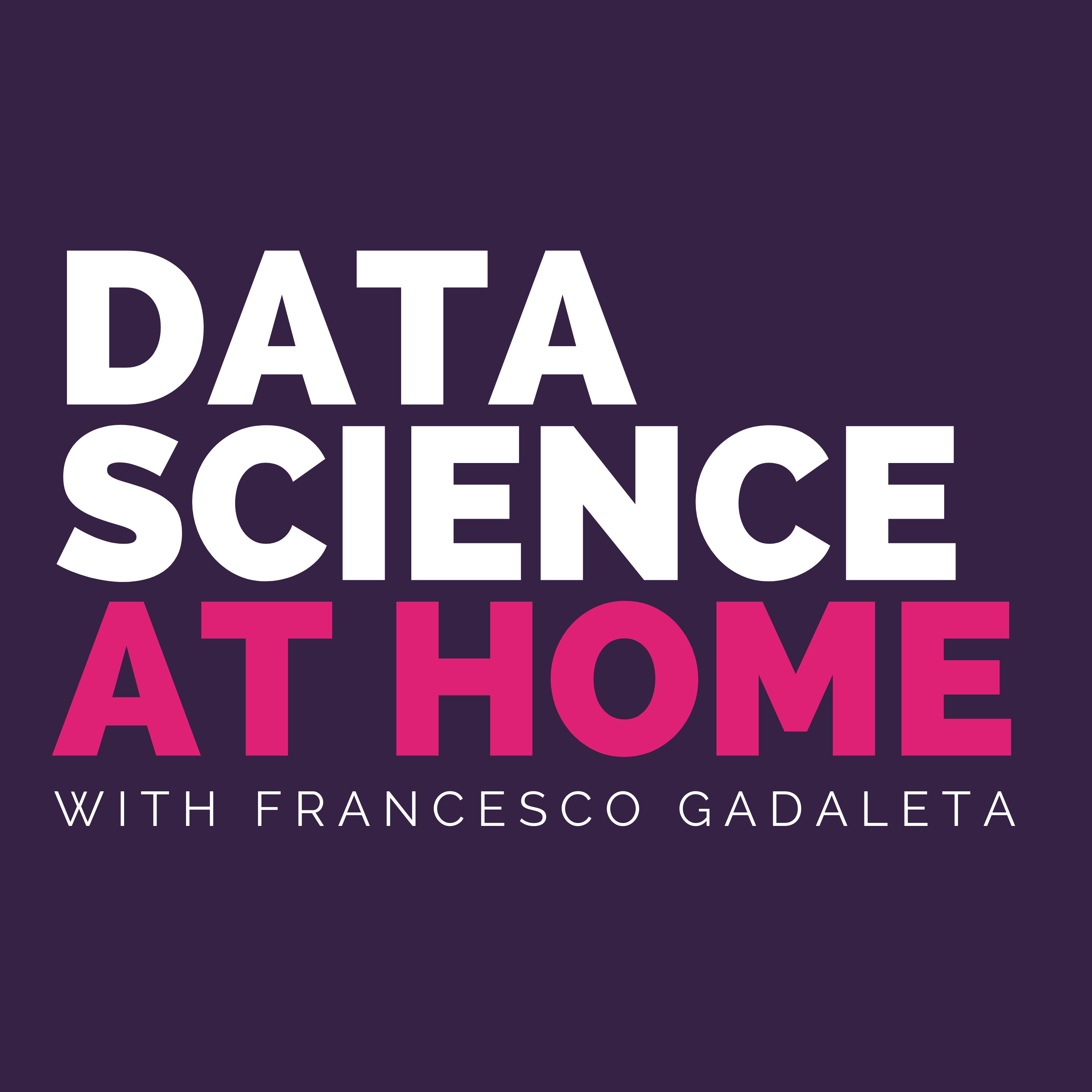
Data Science at Home[RB] How to scale AI in your organisation (Ep. 79)Join the discussion on our Discord serverScaling technology and business processes are not equal. Since the beginning of the enterprise technology, scaling software has been a difficult task to get right inside large organisations. When it comes to Artificial Intelligence and Machine Learning, it becomes vastly more complicated. In this episode I propose a framework - in five pillars - for the business side of artificial intelligence. This is a public episode. If you would like to discuss this with other subscribers or get access to bo...
2019-09-2613 min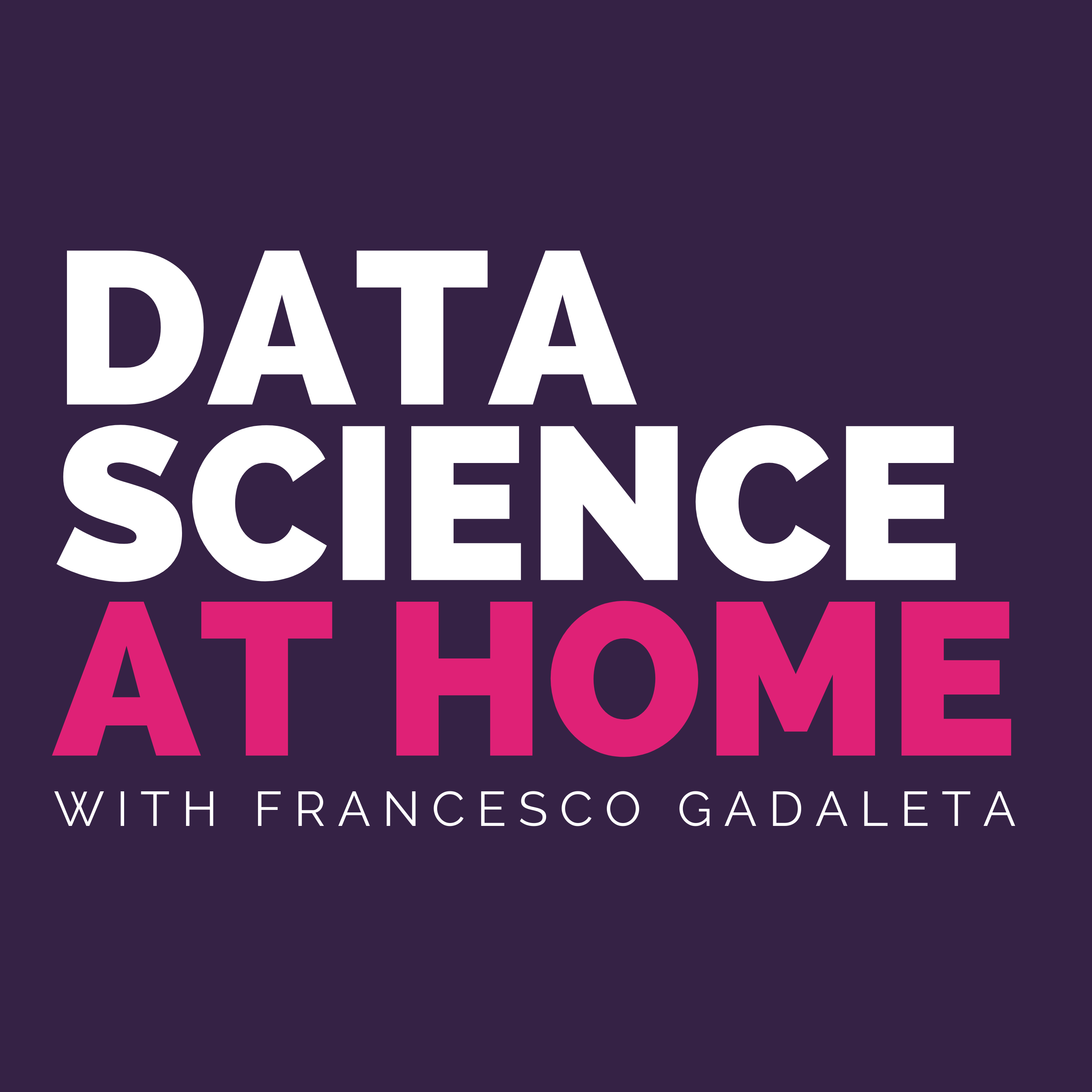
Data Science at HomeReplicating GPT-2, the most dangerous NLP model (with Aaron Gokaslan) (Ep. 78)Join the discussion on our Discord serverIn this episode, I am with Aaron Gokaslan, computer vision researcher, AI Resident at Facebook AI Research. Aaron is the author of OpenGPT-2, a parallel NLP model to the most discussed version that OpenAI decided not to release because too accurate to be published. We discuss about image-to-image translation, the dangers of the GPT-2 model and the future of AI. Moreover, Aaron provides some very interesting links and demos that will blow your mind!Enjoy the show! ReferencesMultimodal image to...
2019-09-2337 min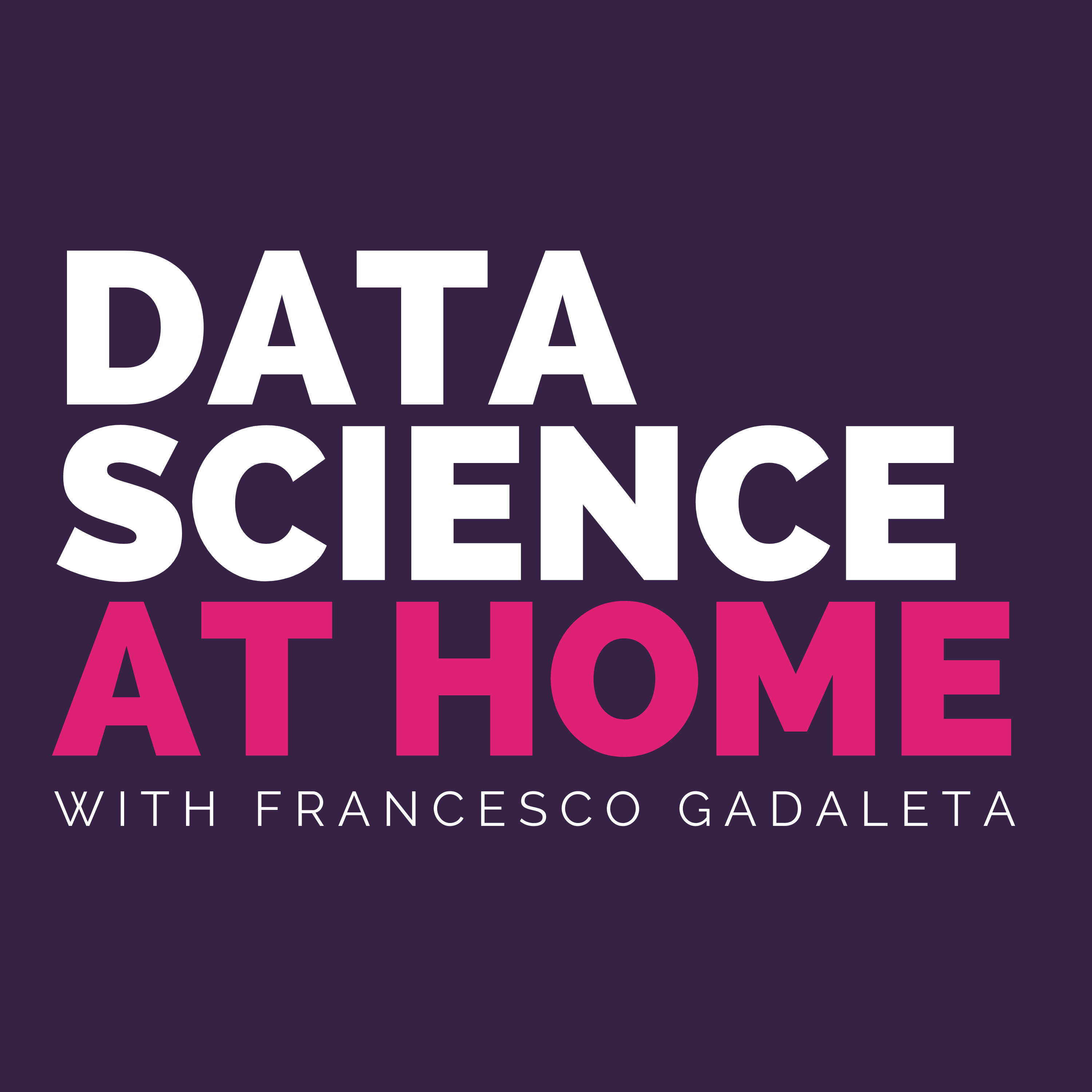
Data Science at HomeTraining neural networks faster without GPU [RB] (Ep. 77)Join the discussion on our Discord serverTraining neural networks faster usually involves the usage of powerful GPUs. In this episode I explain an interesting method from a group of researchers from Google Brain, who can train neural networks faster by squeezing the hardware to their needs and making the training pipeline more dense.Enjoy the show! ReferencesFaster Neural Network Training with Data Echoinghttps://arxiv.org/abs/1907.05550 This is a public episode. If you would like to discuss this with other subscribers or get a...
2019-09-1722 min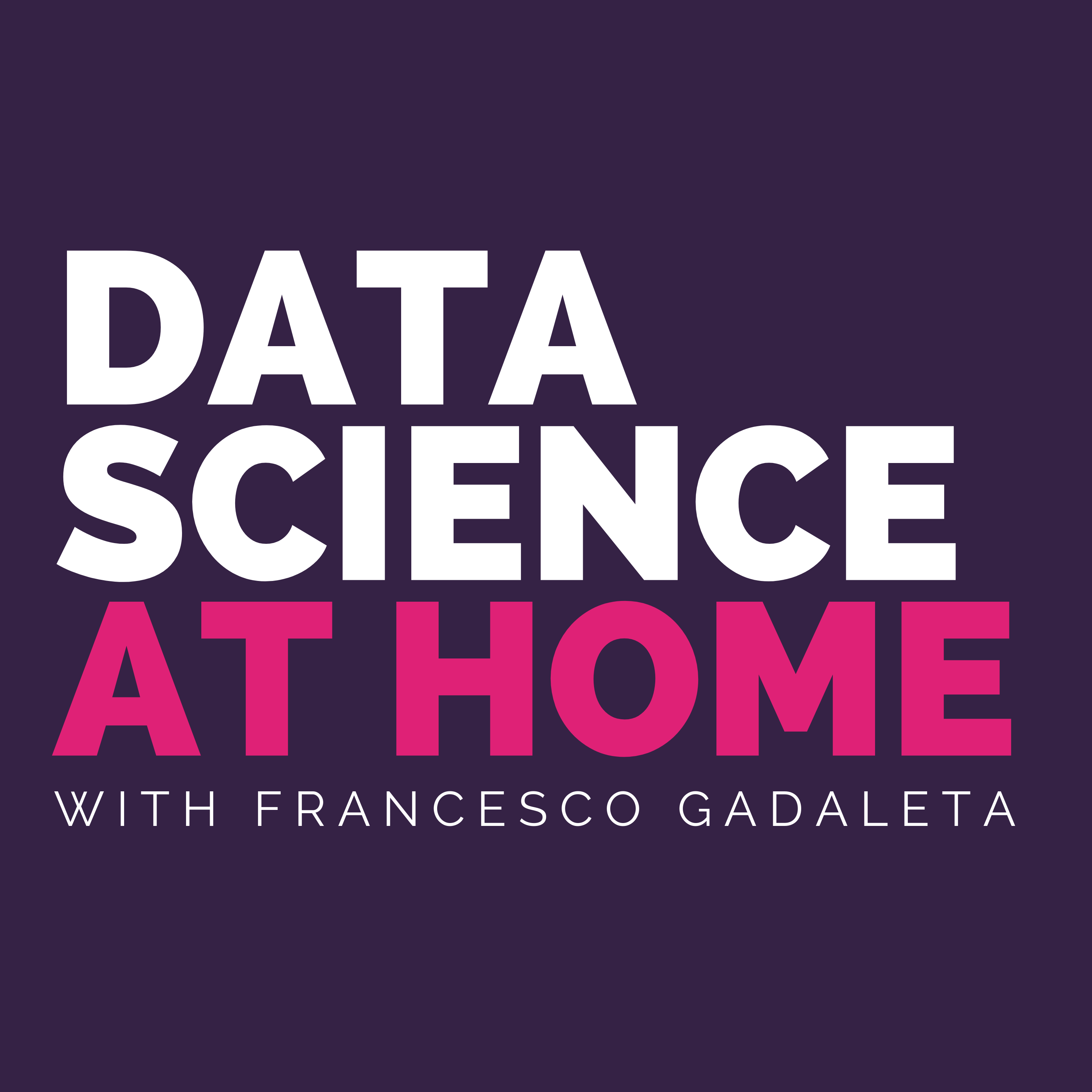
Data Science at HomeHow to generate very large images with GANs (Ep. 76)Join the discussion on our Discord serverIn this episode I explain how a research group from the University of Lubeck dominated the curse of dimensionality for the generation of large medical images with GANs. The problem is not as trivial as it seems. Many researchers have failed in generating large images with GANs before. One interesting application of such approach is in medicine for the generation of CT and X-ray images.Enjoy the show! ReferencesMulti-scale GANs for Memory-efficient Generation of High Resolution Medical Images https://arxiv.org/ab...
2019-09-0614 min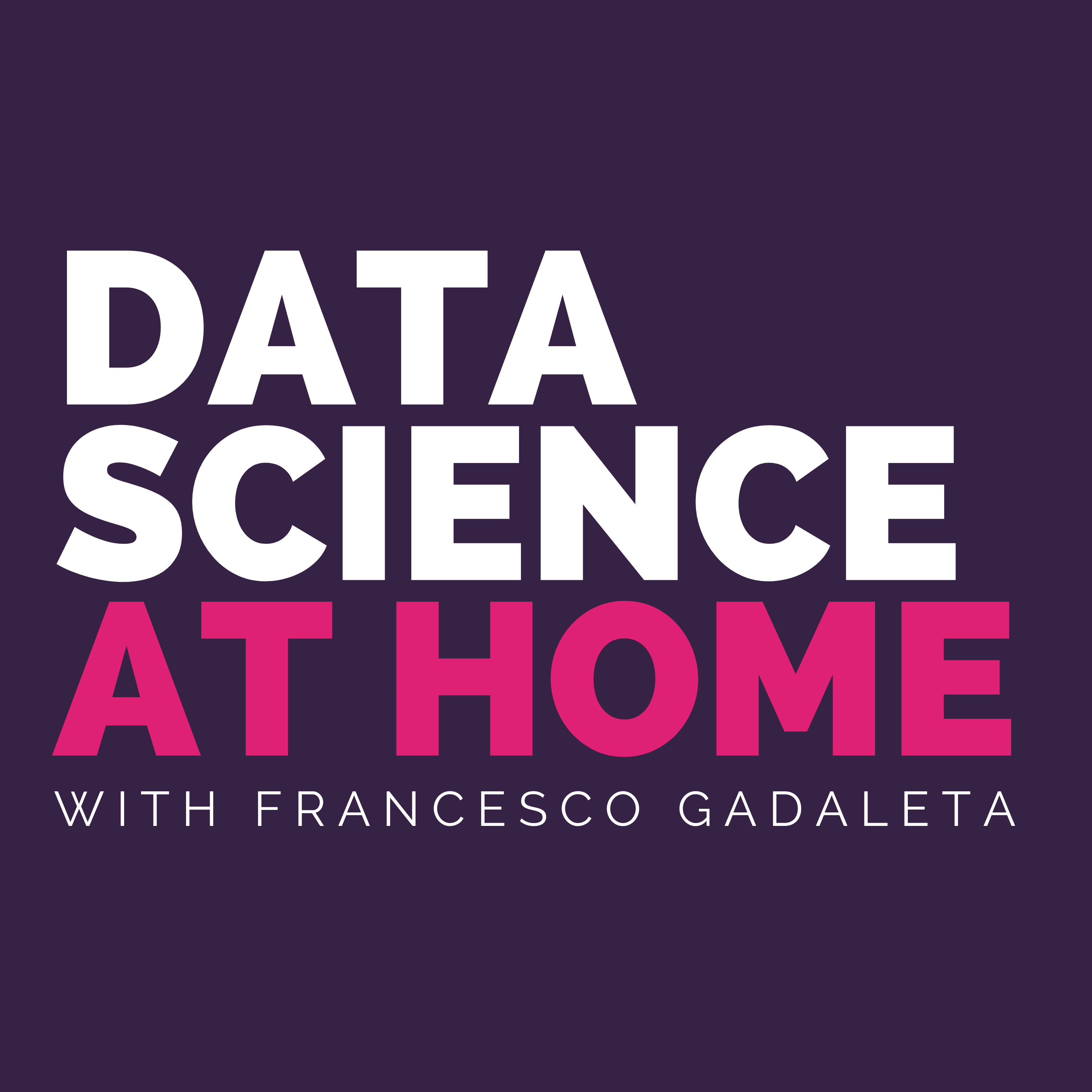
Data Science at Home[RB] Complex video analysis made easy with Videoflow (Ep. 75)In this episode I am with Jadiel de Armas, senior software engineer at Disney and author of Videflow, a Python framework that facilitates the quick development of complex video analysis applications and other series-processing based applications in a multiprocessing environment. I have inspected the videoflow repo on Github and some of the capabilities of this framework and I must say that it’s really interesting. Jadiel is going to tell us a lot more than what you can read from Github ReferencesVideflow Github official repository https://github.com/videof...
2019-08-2930 min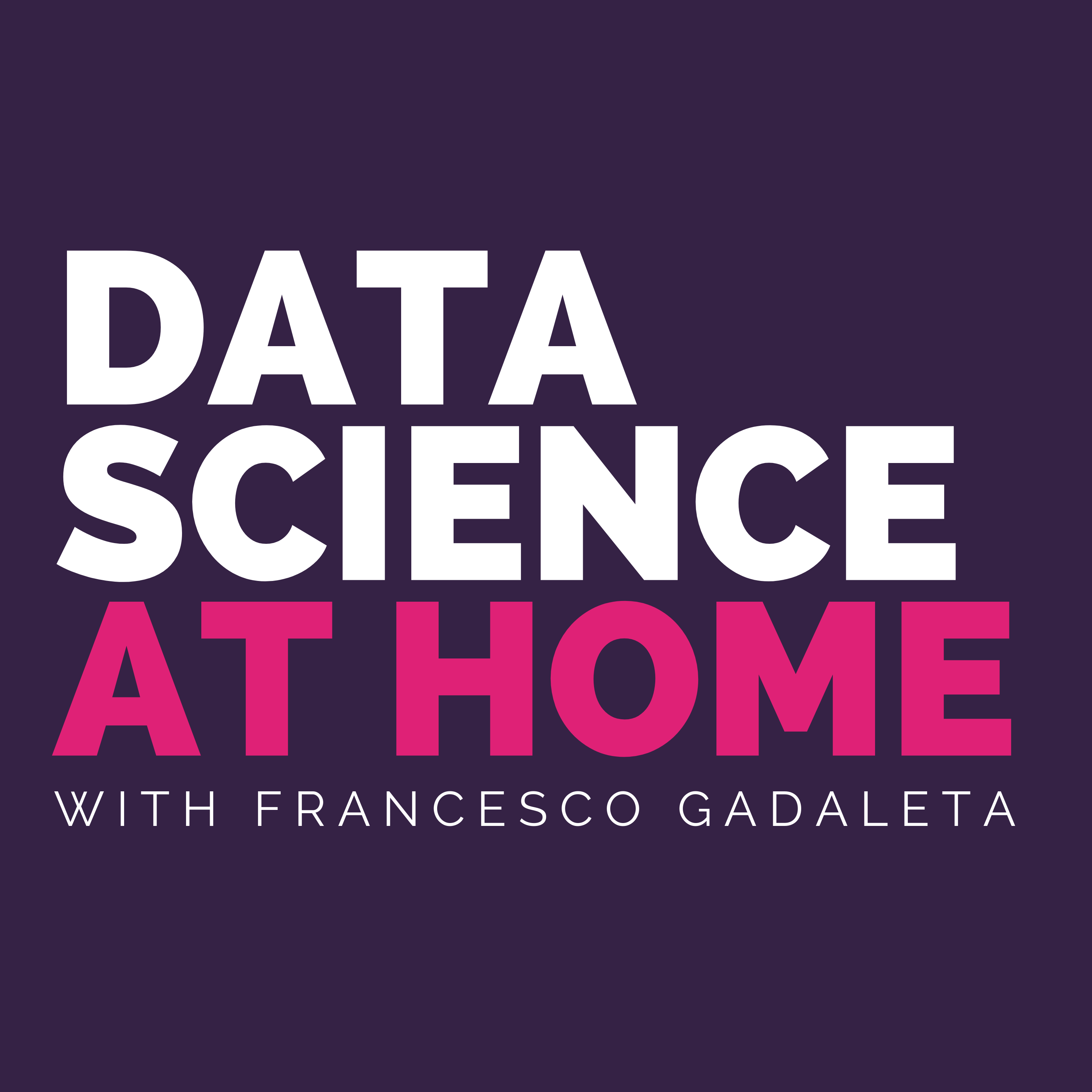
Data Science at Home[RB] Validate neural networks without data with Dr. Charles Martin (Ep. 74)In this episode, I am with Dr. Charles Martin from Calculation Consulting a machine learning and data science consulting company based in San Francisco. We speak about the nuts and bolts of deep neural networks and some impressive findings about the way they work. The questions that Charles answers in the show are essentially two:Why is regularisation in deep learning seemingly quite different than regularisation in other areas on ML?How can we dominate DNN in a theoretically principled way? References The WeightWatcher tool for pre...
2019-08-2744 min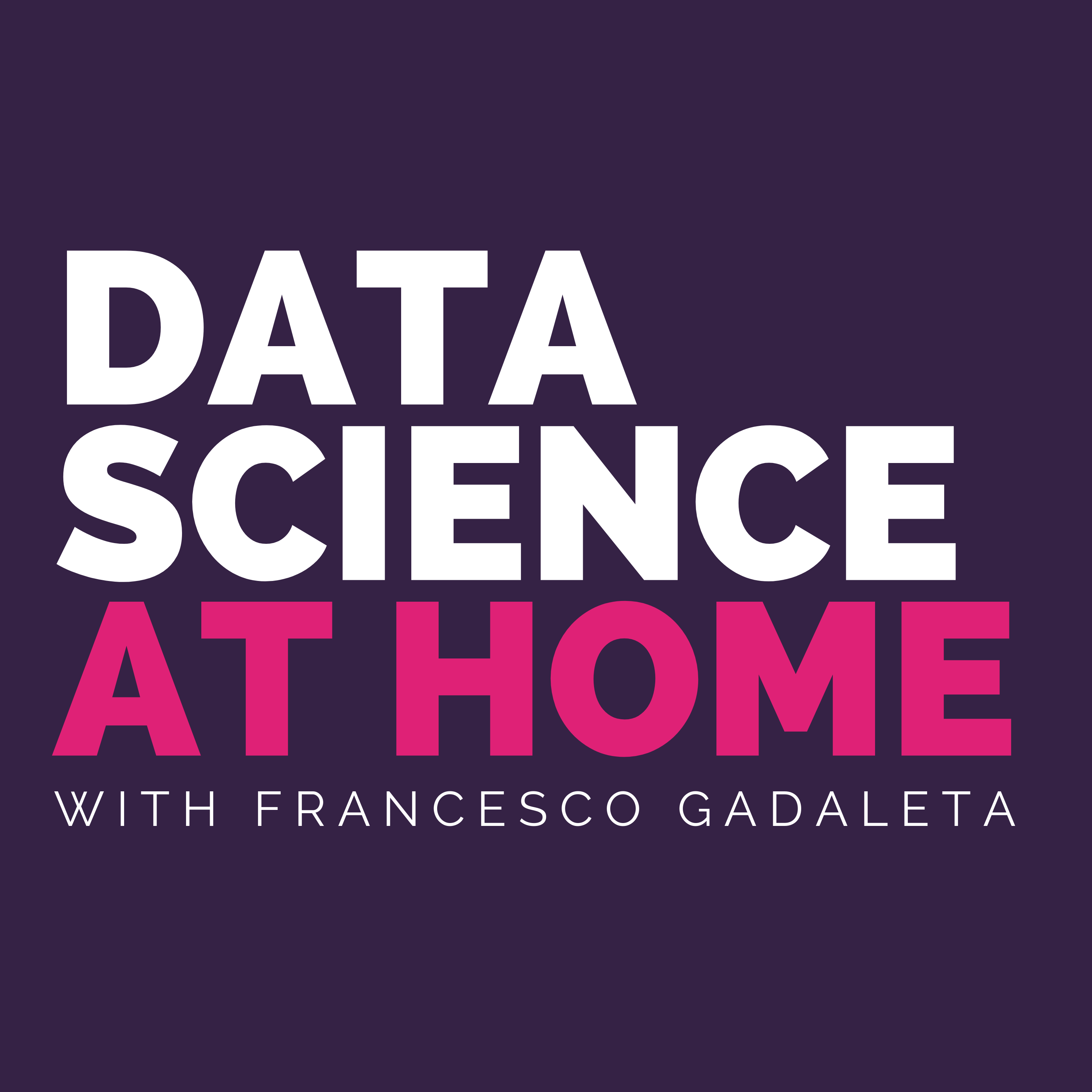
Data Science at HomeHow to cluster tabular data with Markov Clustering (Ep. 73)In this episode I explain how a community detection algorithm known as Markov clustering can be constructed by combining simple concepts like random walks, graphs, similarity matrix. Moreover, I highlight how one can build a similarity graph and then run a community detection algorithm on such graph to find clusters in tabular data.You can find a simple hands-on code snippet to play with on the Amethix Blog Enjoy the show! References[1] S. Fortunato, “Community detection in graphs”, Physics Reports, volume 486, issues 3-5, pages 75-174, February 2010....
2019-08-2120 min
Data Science at HomeFounder Interview – Francesco Gadaleta of FitchainCross-posting from Cryptoradio.io
Overview
Francesco Gadaleta introduces Fitchain, a decentralized machine learning platform that combines blockchain technology and AI to solve the data manipulation problem in restrictive environments such as healthcare or financial institutions.Francesco Gadaleta is the founder of Fitchain.io and senior advisor to Abe AI. Fitchain is a platform that officially started in October 2017, which allows data scientists to write machine learning models on data they cannot see and access due to restrictions imposed in healthcare or financial environments. In the Fitchain platform, there are two actors, the data owner and the data scientist. They b...
2018-05-2431 min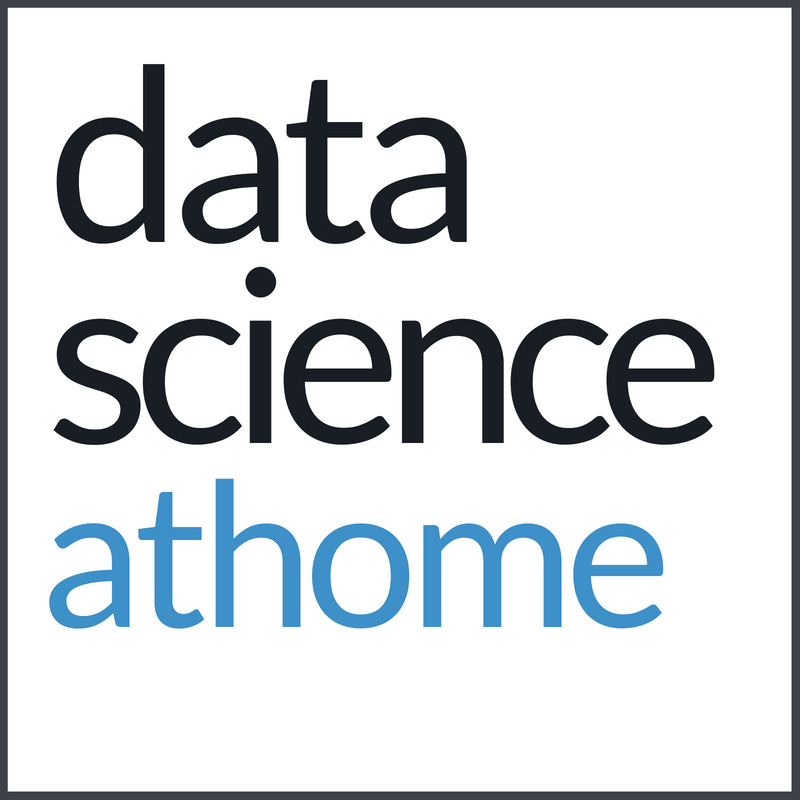
Data Science at HomeFounder Interview – Francesco Gadaleta of FitchainCross-posting from Cryptoradio.ioOverviewFrancesco Gadaleta introduces Fitchain, a decentralized machine learning platform that combines blockchain technology and AI to solve the data manipulation problem in restrictive environments such as healthcare or financial institutions.Francesco Gadaleta is the founder of Fitchain.io and senior advisor to Abe AI. Fitchain is a platform that officially started in October 2017, which allows data scientists to write machine learning models on data they cannot see and access due to restrictions imposed in healthcare or financial environments. In the Fitchain platform, there are two actors, the data owner and the data s...
2018-05-2431 min
Crypto RadioFrancesco Gadaleta of FitchainFrancesco Gadaleta introduces Fitchain, a decentralized machine learning platform that combines blockchain technology and AI to solve the data manipulation problem in restrictive environments such as healthcare or financial institutions. Show notes: http://cryptoradio.io/fitchain This episode is sponsored by: http://cryptoradio.io/play
2018-05-2331 min